



 MLA and BA(LS) Field Trip to Tai Tong AFCD Tree Nursery
MLA and BA(LS) Field Trip to Tai Tong AFCD Tree Nursery





 MLA and BA(LS) Field Trip to Tai Tong AFCD Tree Nursery
MLA and BA(LS) Field Trip to Tai Tong AFCD Tree Nursery
The 2022-2023 Annual for the Division of Landscape Architecture showcases the courses and student work within our three landscape programs: the Bachelor of Arts in Landscape Studies (BALS), the Postgraduate Diploma in Landscape Architecture (PDLA), and the professionally-accredited Master of Landscape Architecture (MLA), as well as our two new Master of Science programs, the MSc in Conservation (MScCONS), and the MSc in Sustainable Environmental Design (MScSED).
The courses and work featured in the following pages describe the thoughtfully developed approaches we are taking to educate future professionals to guide our urban and natural environments towards more sustainable and resilient futures. Our five programs each hold a distinct educational mission and are led by a skilled and dedicated staff, whose knowledge and expertise are rooted in world-class research and innovative design practice. Landscape architecture in the Division—always executed in broad terms—is evolving to engage urban and ecological systems; planning, policy, and advocacy; data and digital tools; and material, historical, and cultural networks through a unique blend of creative strategy, applied research, and design. In 2023, we celebrated 30 years of landscape architecture education at the University of Hong Kong and recognized a generation of alumni who are involved in projects across the region as professionals, educators, and advocates. The newly expanded and interdisciplinary agenda presented in this annual begins to position us for the next 30 years, during which rapidly-shifting climate and social change challenge the contexts and priorities of our work, while technological disruption reshapes the contours of our discipline.
We would like to extend our gratitude to all the students, instructors, teaching assistants, and administrators for their hard work and dedication to excellence in the Division of Landscape Architecture once again this year.
園境建築學部2022-2023年展示了我們以下三個園境課程的科目和 學生作品:園境學文學士 (BALS)、園境建築深造文憑 (PDLA)、 受專業認可的園境建築碩士 (MLA),以及我們兩個新的理科碩士課 程——保育碩士 (MScCONS) 和可持續環境設計碩士 (MScSED)。
以下展示的科目和工作描述了我們經過深思熟慮後用來培育未來專 業人士的方法,引導我們的城市和自然環境邁向更可持續和更具彈 性的未來。我們的五個課程各自擁有獨特的教育使命,由經驗豐富 且專業的教職人員領導,他們的學問及專業知識源於世界一流的研 究和創新設計的實踐。總是以廣義的方式開展工作的園境建築學 部,正在不斷發展與城市和生態系統接軌;參與規劃、政策制定和 宣傳;採用數據和數位工具;透過創意策略、應用研究和設計的獨 特融合,建立物料、歷史和文化網絡。在2023年,我們慶祝香港大 學園境建築教育三十年,並表彰了一代校友,他們作為專業人士、 教育工作者和倡導者參與了整個地區的項目。該年鑑呈現的新發展 和跨學科議程,為我們未來三十年的定位打下基礎,屆時迅速變化 的氣候和社會改變將挑戰我們工作的情境和優先事項,同時顛覆的 技術將重新塑造我們對學科的認知。
我們要向園境建築學系的所有學生、教師、助教和行政人員表示感 謝,他們今年再次為卓越品質而全情投入辛勤工作。
The Master of Landscape Architecture (MLA) is a two-year postgraduate degree in landscape architecture accredited by the Hong Kong Institute of Landscape Architects. Our program is distinguished by a commitment to teaching landscape architecture as an interdisciplinary field of study in which core competencies of landscape architecture are examined alongside developments in planning, conservation, urbanism and ecology.
The MLA curriculum is structured around engaging the critical social, economic and environmental issues shaping Southeast Asia and the greater Pearl River Delta today. Within this context, our approach to landscape architecture is one that spans from the urban to the rural, in which issues of density and development necessitate novel social and ecological solutions. By utilising problem-based approaches to learning and by emphasising critical, research-informed design practices, we prepare our students to take leadership roles as scholars, teachers, and practitioners.
The MLA courses are organised into themed tracks which include design studio, history and theory, technology, and media. Foundation studios explore landscape systems, urban ecology and the formal and informal dimensions of the public realm. One of the two core studios takes students to regions in Southeast Asia in order to carry out fieldwork and engage with local communities in places where landscape issues intersect with rapid development and urbanisation. Final-year studios explore themes of landscape infrastructure, urban design, and environmental planning. The MLA education culminates in an independent thesis project in which students articulate a critical position within the discipline of landscape architecture and test the proposition through a design and research process.
園境碩士學位課程為期兩年,得到香港園境師學會的認證。我們的 課程以致力將景觀建築學作為一個跨學科的研究領域而著稱,密切 關注當下城市規劃、保護、城市化和生態學的發展來檢視學科的核 心競爭力。
園境碩士課程圍繞影響當今東南亞和大珠江三角洲地區的重要社會 、經濟和環境問題。在這種背景下,我們的園境設計教學涵蓋從城 市到農村的各種場景,其中密度和發展問題需要新的社會和生態解 決方案。我們採用以問題為本的學習方法,強調批判性和基於研究 的設計實踐,培養學生在研究、教學和實踐方面擔當領導角色。
課程根據主題進行安排,包括設計課、歷史和理論、技術工藝以及 設計媒體。基礎設計課探索景觀系統,城市生態以及公共領域的正 式和非正式維度。另一個核心設計課將學生帶到東南亞地區進行實 地考察並與當地社區建立聯繫,這些地區的景觀問題常與快速發展 和城市化相互影響。第三學期的設計課將探討景觀基礎設施,城市 設計和環境規劃等主題。課程結束前,學生需要在最後一個學期獨 立完成一項綜合設計與研究的畢業設計。在這個項目中,學生要清 晰闡述自己在該學科的批判性立場並通過設計和研究進行檢驗。
Elective or Other Courses 選修課及其他 Syllabus 課程大綱
* MLA Prerequisite begins in mid-August before the beginning of the first semester * 園境建築碩士預備課程於第一學期之前的八月中旬開始。
Semester 1 第一學期 Semester 1 第一學期
Landscape Design Studio Landscape Design Studio III
Landscape Design Studio II Landscape Thesis
Landscape History and Theory II Landscape Architecture Practice Landscape History and Theory I Thesis Prep
Landscape Plants and Ecology II Landscape Plants and Ecology I
Landscape Technology I Elective Elective Elective Landscape Media Landscape Technology II Semester 2 第二學期 Semester 2 第二學期

Natalia
The Postgraduate Diploma in Landscape Architecture (PDLA) is an intensive one-year curriculum that introduces foundational skills, theories, and concepts of landscape architecture to students without previous training in the environmental design fields. Today’s landscape architectural practice needs to confront increasingly complex challenges arising from climate change, rapid urbanisation, and increasing social inequality in diverse social and ecological environments. As the scope and methods of the field expand and evolve, landscape architects are required more than ever to work with multidisciplinary teams of built environment experts to derive design solutions through innovative platforms. By creating new pathways for students with non-traditional academic backgrounds and experiences to enter the field, the PDLA aims to generate a multi-skilled cohort capable of bridging traditional disciplinary boundaries and expanding the profession from within.
The PDLA curriculum is constructed around a broad approach to landscape architecture with studios and theory courses drawing especially on both international and regional case studies. The curriculum is organised around a sequence of studios introducing students to a set of critical methods for observing, analysing and reshaping the physical environment. Studios are designed in conjunction with lectures and seminars on history and theory, visual communication, and landscape technology that help to expand and contextualise design knowledge. The majority of students who have completed the PDLA have gone on to enrol in the Division’s own MLA program or in other overseas postgraduate landscape programs.
園境深造文憑是一個為期一年的集中強化課程,本課程旨在向環境 設計領域尚未有學習經驗的學生介紹園境建築設計的基本技能、理 論和概念。當代的景觀實踐與學術研究面臨著城市、郊區和農村發 展的複雜問題,牽涉形形色色的文化、經濟和生態環境,並通過創 新平臺,與多學科團隊合作開展工作。隨著範圍和方法的不斷擴大 和發展,該領域必須接納多元化的從業人員來應對這些挑戰。園境 深造文憑課程為具有非傳統學術背景和經驗的學生開闢進入該領域 的新途徑,旨在培養一支能夠跨越傳統學科界限並由內而外擴展專 業領域的多技能隊伍。
園境深造文憑的全部課程是圍繞園境建築學科廣泛和全球性的議題 而構建的,初期的設計課和理論課程尤其借鑒了國際和地區的案例 研究。課程大綱圍繞一系列的設計課進行組織安排,向學生介紹了 觀察、分析和重塑物理環境的一套關鍵方法。設計課與歷史和理 論、視覺傳達和園境建築技術課程的內容緊密相連;這些課程也得 以將設計課的外延進行擴展並使其脈絡化。在完成深造文憑課程 後,大多數學生都被錄取進入本學部的園境碩士項目深造,或者赴 海外繼續研習景觀高級課程。
Syllabus
課程大綱
Courses
* Landscape Architecture Intensive begins in mid-August before the beginning of the first semester
園境建築强化課程於第一學期之前的八月中旬開始。
Year 1 一年級
Semester 1 第一學期
Landscape Architecture Intensive*
Foundation Design Studio I
Histories of Landscape
Landscape Systems
Landscape Media I
Semester 2 第二學期
Foundation Design Studio II
Environment and Communities of the City
Landscape Technologies and Techniques
Landscape Media II

The Bachelor of Arts in Landscape Studies program at the University of Hong Kong equips students with a curriculum that emphasises design, landscape technology, history and theory, and visual communications. We aim to give students a comprehensive grounding in the knowledge, concepts and skills that landscape architects commonly require to deal with the complex community, ecological and developmental issues within diverse urban and natural environments.
The BA(LS) program is studio-based, allowing students to work directly with Instructor in design projects and guided research studies that integrate both theoretical exploration and practical implementation. Design studio is integrated with concurrent theoretical and technical courses that reinforce the core knowledge of landscape architecture and broaden students’ perspectives across related disciplines.
The program starts with an interdisciplinary view of the built environment that trains students in critical observation skills and visual communication. In the second year, students experiment with making, scale, experiences, and materials, acquiring a foundational vocabulary in the phenomenological, material, and spatial aspects of landscape. The final two years expand in complexity as students are confronted with ecological, sociological, urban, and infrastructural aspects within the design studio while building theoretical and technical competency to complement the design studio.
Students are exposed to a wide range of environments through site visits and field trips, and the Division actively collaborates with other leading landscape programs overseas to offer opportunities for students to engage with their peers from around the world.
香港大學園境學文學士課程為學生提供了一份強調設計、園境建築 技術、歷史和理論以及視覺傳達的課程大綱。為了應對不同的城市 與自然環境下複雜的社群、生態和發展問題,園境建築領域通常對 知識、概念和技能均有要求;我們的目標正是讓學生在這些知識、 概念、技能方面奠定全面的基礎。園境學文學士項目以設計課為基 礎,允許學生在整合了理論探索和實踐應用的設計項目和指導性研 究學習中直接與導師合作。設計課與其他同時展開的理論和技術課 程緊密相連;這些課程既增強了園境建築學科的核心知識,又拓寬 了學生跨學科的視野。
園境學文學士課程從建成環境的跨學科觀察開始,培養學生的批判 性觀察技能和視覺傳達能力。第二年,學生們嘗試製作、測量、體 驗材料,學習表述景觀現象、材料和空間方面的基本詞彙。後兩 年,學生在設計課要應對生態、社會、城市和基礎建設各方面的問 題,並補充增強理論和技術能力,學習的複雜程度也相應增加。通 過現場參觀和實地考察,學生得以接觸各種各樣的環境。
此外,園境建築學部與海外各先進的景觀課程積極合作,為學生提 供了與世界各地同行交流的機會。

Linda
In 2000, the Master of Science in Architectural Conservation Program (MSc(Conservation)) was established at HKU to provide professional training for conservation practitioners. Today we continue that legacy and strive to ensure that our students’ experience is engaging, supportive, and academically challenging.
In 2018, UNESCO Director-General Audrey Azoulay described the many new challenges faced by heritage professionals. These ranged from the transformations of the fourth industrial revolution which blurs the lines between digital, biological and physical spheres, to global demographic shifts, and to unfolding climate change, all of which have profound impacts on the ways we can protect our most valuable heritage assets for future generations.
These global challenges and shifts in understandings have required heritage professionals to develop a broader interdisciplinary understanding of heritage and a more comprehensive toolset for heritage conservation. Towards that end, the MSc Conservation program has been relaunched in 2022 to broaden and deepen built heritage and landscape conservation teaching and research within the Faculty of Architecture. The new curriculum, which emphasises the integration of heritage with the Sustainable Development Goals (SDGs), aims to equip students with the technical competencies and intellectual skills required to guide decision-making in conservation planning, design and management in the 21st century.
With its internationally recognised expertise in architecture, landscape architecture, planning and building construction, HKU provides an ideal interdisciplinary setting for educating wellrounded conservation professionals and future heritage leaders.
香港大學於2000年開辦建築文物保護理學碩士課程,為文物保護從 業人員提供專業培訓。如今,我們繼續傳承這一傳統,努力確保學 生的學習經歷具有吸引力、支持性和學術挑戰性。
2018年,聯合國教科文組織總幹事奧黛麗-阿祖萊描述了遺產專業人 員面臨的許多新挑戰。這些挑戰包括第四次工業革命帶來的變革( 它模糊了數字、生物和物理領域之間的界限)、全球人口結構的變 化以及正在發生的氣候變化,所有這些都對我們為子孫後代保護最 寶貴遺產的方式產生了深遠影響。
這些全球性的挑戰和認識上的轉變,要求遺產專業人員對遺產有更 廣泛的跨學科理解,並掌握更全面的建築保育知識工具。為此,建 築學院於 2022 年重新推出了建築文物保護理學碩士課程,以擴大 和深化建築遺產和景觀保護的教學與研究。新課程強調將遺產與可 持續發展目標(SDGs)相結合,旨在培養學生在21世紀指導保護規 劃、設計和管理決策所需的技術能力和知識技能。
香港大學在建築、園林、規劃和建築施工方面擁有國際公認的專業 知識,為培養全面的文物保護專業人才和未來的文物領袖,提供了 理想的跨學科環境。
CONS8120 - Built Heritage and Its
CONS8215 - Conservation Thesis (Capstone experience)
CONS8103 - Charters and Legislation of Conservation
CONS8124 - Conservation and Assessment Techniques
- Methods
CONS8216 - Critical Issues in Heritage Conservation
- Conservation Planning and Management Studio
CONS8222 - Heritage Economics and Sustainable Development

Chao Associate Professor MSc(SED) Program Director
CHEN
Bin
Globally increasing environmental awareness and concern, fast urbanization and technological development have together resulted in an urgent need and opportunity to rethink how we could design, construct and manage our cities in a more efficient, effective and low-cost way.
We have offered the Master of Science (MSc) Program in Sustainable Environmental Design since fall 2022. Students enrolled in our taught-postgraduate degrees receive training in scientific research and technique skills and conduct independent research under the guidance of a team of renowned supervisors. Candidates are also expected with the educational background in built environment disciplines (architecture, civil engineering, building science and technology, landscape architecture, urban studies, etc.) and/or fields (e.g. environmental science, mathematics, computer science, business, management, and social sciences). our MScSED program has been designed with a view to combining specialist study and a broad-based training in professional reflection, assessment, and research methods taught by world-class scholars and well-known professionals. Details of our program can be found under the section of courses.
Sustainable urbanization is increasingly a key to successful city design, construction, development, and management and an important component of design competitions, contractor's briefs, public policy and planning. I would like to take this opportunity to thank you for your interest in our program and hope you'll join us in learning to promote design innovation and smart technology for creating a better living environment and more sustainable future for our planet and our next generation
可持續環境設計理學碩士 (MSc (SED))
全球日益增強的環境意識和關注、快速的城市化和技術發展共同導 致迫切需要和機會重新思考我們如何以更高效、更有效和低成本的 方式設計、建設和管理我們的城市。
自2022年秋季以來,我們開設了理科碩士(可持續環境設計) [MSc(SED)]課程。就讀於我們的授課式研究生學位的學生將接受 科學研究和技術技能方面的培訓,並在知名導師團隊的指導下進行 獨立研究。候選人還應具有建築環境學科(建築、土木工程、建築 科學與技術、景觀建築、城市研究等)和/或領域(例如環境科學、 數學、計算機科學、商業、管理、和社會科學)。我們的 MScSED 計劃旨在將專業研究與由世界級學者和知名專業人士教授的專業反 思、評估和研究方法方面的廣泛培訓相結合。我們計劃的詳細信息 可以在課程部分找到。
可持續城市化日益成為城市設計、建設、開發和管理成功的關鍵, 也是設計競賽、承包商簡報、公共政策和規劃的重要組成部分。我 想藉此機會感謝您對我們計劃的興趣,並希望您能與我們一起學習 促進設計創新和智能技術,為我們的星球和我們的下一代創造更好 的生活環境和更可持續的未來。
SEED6104 Dissertation Part 1 (Capstone Experience)
SEED6203 Designing for a Changing Climate
SEED6101 Bioclimatic Building Design
SEED6103 Environmental Simulation and Performance Assessment Tools
SEED6303 Environmental Policy and Management for Megacities
SEED6204 Dissertation Part II (Capstone Experience)
SEED6201 Green Building Assessment and Climate Responsive Design
SEED6202 City Risk and Resilience: Emerging Planning Theories and Practices
SEED6102 Innovation and Smart Technology for Sustainable Development
SEED6305 Topical Study I in Environmental Design

ARCH7299
Thesis coordinator :
KELLY Ashley Scott
Thesis advisors :
CHEN Bin
ECHEVERRI Natalia
HILGEFORT Jason
JIANG Bin
KELLY Ashley Scott
LU Xiaoxuan
MAK Vincci
PRYOR Mathew
REN Chao
SHETABI Linda
TRUMPF Susanne
VALIN Ivan
The Landscape Thesis is a year-long student-led design and research project that caps our Master of Landscape Architecture (MLA) program. The thesis project gives our students the opportunity to define and explore their own individual interests and positions on contemporary landscape architecture while synthesizing the knowledge and skills gained from their landscape education at HKU. Thesis projects also provide a crucial platform for discussion and debate among students, advisors, mentors, and the wider academic and professional community of landscape architects, architects, planners, ecologists, sociologists, and geographers who are invited to jury the students’ presentations. These debates about the practices, theories and methods of landscape architecture and its important role in environmental stewardship very much define the ambition of landscape architecture at HKU.
Students begin with the Thesis Preparation course, which covers the primary methods and positioning of landscape architectural research and guides students in drafting a formal research statement, case studies, and literature review. Students work with their advisor through one of several tracks of landscape research that help align students’ interests and ambitions broadly with their advisors’ domains of knowledge. Student theses this year resounded landscape architecture’s principal role in bridging the architectural, civil engineering, and planning fields with ecological science and environmental conservation. Students’ theses covered a wide range of topics, including: environmental and humanitarian conflicts, public participation and advocacy; artificial intelligence, smart cities and smart Earth; landscape conservation and heritage; and challenging the status quo of design and planning practice in sites across Hong Kong, greater China, and Southeast and Central Asia.












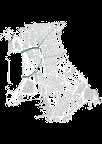













































Challenging, Redefining, and Healing:
Using the Central of Hong Kong as a Sample Site to Propose a Multi-layer Pedestrian System for the Future Cities



















































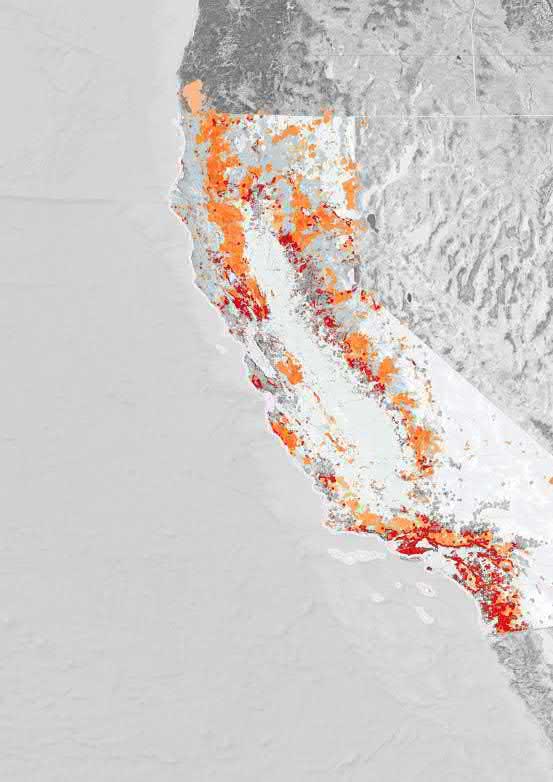











In between Agendas and Perceptions: Unpacking the Rhetoric of Infrastructure, An Invitation to Co-create the Prophecy









Instructors :
TRUMPF Susanne
REN Chao
JIANG Bin
KOKORA Michael
Teaching Assistants :
FAN Phoebe
LIU Xin
TANG Chun Wah Richard
TSUI Ho Yin Tony
In this studio, students explored the core practices of landscape design in the context of the dynamic natural systems and contested territories along the coastal edge of Hong Kong Island. The studio's origin was the Hong Kong Coastal Trail, a working proposal for restoring pedestrian and recreational trails to create a continuous path around the island. Students worked with this initiative as a catalyst for additional strategies and interventions that amplified the connective, regenerative, community-focused ambitions of the existing plans. The semester was divided into three projects, each tackling urban landscape concerns at different scales. First, students worked in groups on a larger section of the trail and used maps and sectional diagrams to illustrate the network of relationships, decisions, and agencies that underlay the coastal trail’s development. The second project examined the variety of landscape systems and communities that are crossed by the proposed trail right of way. After detailed spatial and material documentation, students isolated a user and designed an interface that augmented, adapted, or modified that user's exchanges with the site. They then developed strategies that structure the trail’s potential within the larger urban and ecological territory.Students' individually developed proposals included landscape-led interventions augmenting the original trail planning to conserve critical habitat or improve water retention; expand the possibilities for green or multi-functional civil infrastructure; or support local communities through access, mobility, and revitalization projects.





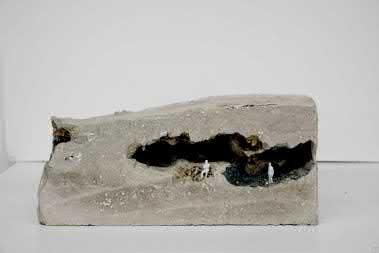


















This studio sought to understand and document the actual methods of adaptation and landscape management within Ho Chi Minh City’s periphery. Sites for the studio were focused on water and drainage networks that are enmeshed in this rapidly evolving rural and urban fabric. The studio considered how landscape architectural perspectives can help reshape urban ecology and community resilience.
Five exercises embraced the learning experience of the Landscape Architecture studio; from speculation, analysis, research, and multi-scalar mapping to response, students explored and understood the conditions and emergent issues in Ho Chi Minh City and the region. In the first part, students developed site analysis which broadly fit under three main umbrella topics: Adaptive strategies for flood mitigation and stormwater management in the context of infrastructural investment and decay, Regenerating urban ecologies and community resilience in the context of urban nature and Environmental change and expanding open space and co-production of the city in the context of development and regional economic dynamics. The final design exercise asked students to synthesize their theoretical and technical research with their observational/documentary fieldwork to generate a concise landscape response. This year, the final design exercise included topics such as: restorative and regenerative industries, development-induced displacement and risk mitigation, ecological restoration of water systems, sustainable regenerations of degraded urban fabrics, territorial regenerations in peri-urban areas, and ecological restoration of water systems. ARCH







Network Awakening: Strategies for the reconnection and regeneration of shrunk green fragments in Saigon by MA Duo










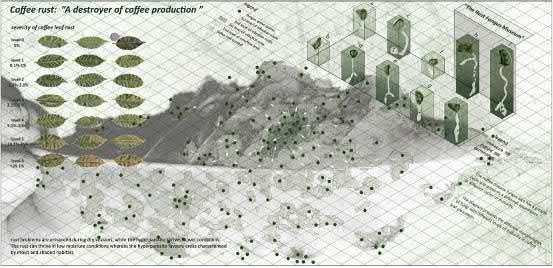

This studio is set up under the premise that heritage nowadays are often architecturaland monumental-centric, that natural and everyday heritages receive less attention and recognition. Hence, this studio takes this opportunity to engage students in develop aware-ness, critique, and way forwards for it.
Our projects started with a short exercise to learn about these old village trees, in terms of their form, space, character and aura, as well as their connection and relationship with the rest of the village landscapes. Then, the students explored how these old village trees are integral and significant components in everyday village culture: what are the cultural and traditional practices in the rural context, and how the village trees are part of that? Our third exercise, first, fosters students to establish an understanding of the changing modes of interactions between old trees and people through time. Then, the second part engages in developing critical thinking of why and how the conservation of old trees as part of the everyday landscape in village context should be handled, in face of the evolving rural everyday life, cultural practices, and use of space. Harnessing all documentation and analysis works generated, the second half of the studio is dedicated to develop rural landscape design proposals that acknowledges old trees as everyday heritage, and incorporates critical reviews generated about the evolving everyday life and practices into the future planning of space and forward-looking conservation strategy. This studio topic is inspired by the instructor's recent Lord Wilson Heritage Trust project of Village, Tree, Heritage.












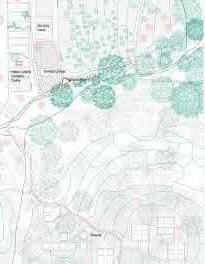
Entangled Futures studio is situated at the intersection of ecology and technology, building on a “posthuman” agency, where the human, as a modernist definition, does not exist. “Entanglement” is then the collective intelligence and complex relationships among people, natural and digital systems. Based on intensive site research, studio participants developed imaginative propositions between landscape design, social engagement and environmental sciences. The aim of this studio is to redefine interdependence, living knowledge and complexity in landscape design and eco-systemic thinking. This 4th edition of the studio took Lantau Island in focus; as the infrastructure of Hong Kong, i.e. the weekend houses, transportation hubs, fiber optic cable networks, mining and water reservoirs, forests, as well as spiritual sites, recreation, quarantine, and correction centres. Planning visions accelerated the urbanisation of the island. Multiple visions (or lack thereof) for the island created polarized realities. The studio asked about possible futures of Lantau Island: Do these futures favour for seamless connectedness, or small networks of indigenous characteristics? Do they favour for technological acceleration, or intelligence by forests? What are the posthuman agencies of the island? Where do humans sit in these future scenarios? How does wetness of landscape relate to these futures?





ZOOLOGICAL AND BOTANICAL GARDERN
DEMOGRAPHICS
LAND USE
REVENUE & EXPENDITURE
RENTAL FEE
GREEN AREA
:
Urban Parks: Re-imagining Urban Identity and Ecologies of Hong Kong Park and the Zoological and Botanical Gardens
The premise of the studio is to reimagine contemporary urban parks and specifically explore re-thinking Hong Kong Park and the Zoological and Botanical Gardens. Students considered the role and importance of green open space in metropolitan Hong Kong and developed a new sustainable future identity for both parks. Students conceptualized and illustrated the social, ecological, and economic urban ecologies that drove their design work by evaluating, analyzing, and reimagining the parks and their use. Furthermore, they studied how parks could become catalysts for a greener city vision and empower a more vibrant and sustainable urban ecosystem for the future. The studio explored urban perception, creation, and imagination, taught from both the landscape architects' and architects' perspectives. Moreover, the studio demonstrated how a multi-disciplinary approach led to revelatory urban architecture and landscape solutions. The studio began with a clay landform exercise to conceptualize form. The studio then developed individual open space concepts through diagrams, drawings, and models. The studio's goal was to prepare the students for practice, teaching them how to express and communicate their ideas and represent their design in a compelling and informative presentation.
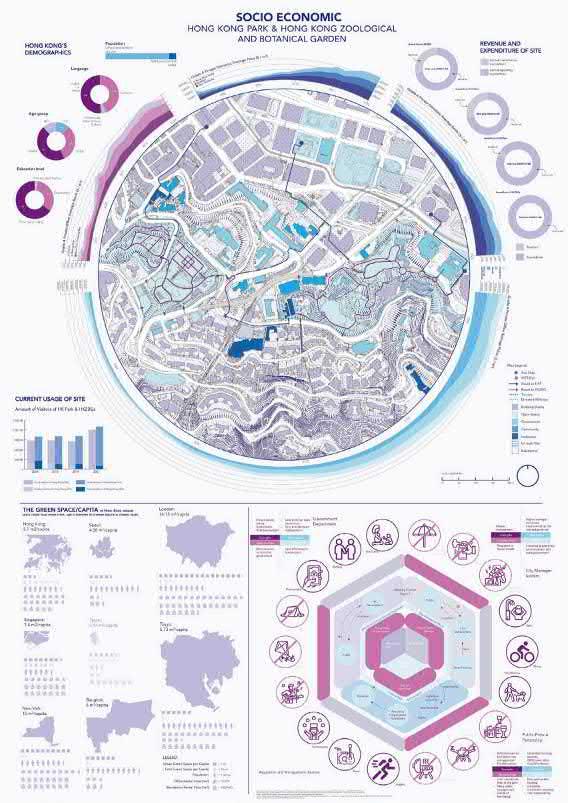
Socio Economic: Hong Kong Park & Hong Kong Zoological and Botanical Garden by WONG Ka Ki Anais
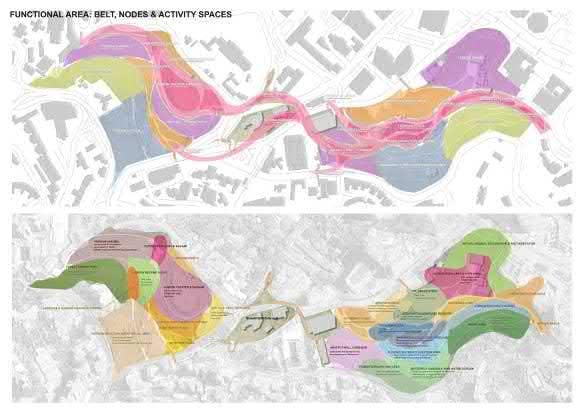






The studio asked students to approach design with a broadened, alternative perspective, enriching the process of design by opening it up to the knowledge and influence of fields outside of landscape architecture. By drawing upon sources from other expertise, students could envision a mode of design beyond typical practice or studies to engage an expanded concept of landscape. Specifically, students were encouraged to focus their attention on various island sites and conditions around Hong Kong, with in-person field study through site visits as the essential primary basis of their design thinking. This physical, visceral, experiential study of a place combined with both research and an analytical lens to inform a coherent architectural response. Following class collective field visits to various islands, students selected their own individual site from a preselected list as the basis of their design proposition. Students could also propose their own sites by convincingly demonstrating the significance and relevance of the site's potential in contributing to Hong Kong's multivalent island identities. Students formulated their unique design projects in response to the particularities of the selected sites. In essence, students complemented this syllabus by establishing their own brief, values, program, scale, and proposition for new understandings of what defined an island. Students were encouraged to pursue sites and methodologies such as prototypes or design-build strategies that had potential to be further developed for thesis.












Theories and Practices of Contemporary Landscape Architecture: Landscapes of Modernity, Modernism and the Contemporary
The discipline of landscape architecture has been transformed over the past few decades with the advent of new sets of theories and agendas formulated by landscape theorists and practitioners. Various protagonists have set out to reconceptualize the roles of landscape architecture and its field of operations. At the same time, a related set of intellectual currents has arisen to challenge our pre-existing ideas of Landscape, Nature, Culture, Environment and so forth. Such intellectual transformations lead to the emergence of new design and planning methodologies and subsequent spatial outcomes, which acknowledge and respond to changing ecological, economic, and social conditions.
This course sought to understand these contemporary positions by tracing their developments from the late 19th to 21st centuries. It posited that history, theory and practice are contingent upon one another and, together, they ground design in the particularities of time and place (Meyer, 1992). The course began by examining the emergence of modern landscape architecture and design thinking in different contexts as well as the changing relationship between the discipline and other fields over the 20th century. It focused on exploring the standard landscape concepts, such as Site, Form, and Ecology, particularly the ever-changing approaches to and definitions of these concepts.
ARCH7142 / ARCH4705 ARCH3205 BA(LS)
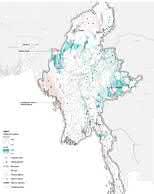

1. Base development scenario for clouded leopard in landscape ecology case study by CHAU Ngai Tung Bobo, CHENG Wai Jon Joni, and LO Suet Wing Sylvia
2. Deconstructing the use of global indicators and impact assessment in Southeast Asia by LU Tong, XIANG Linyu, and YANG Zihan
Instructors :
KELLY Ashley Scott
CEVALLOS BARRAGAN Francisco
Teaching assistant : Saw Yu Nwe Sandra
Ecological planning is undertaken by professionals across the fields of landscape architecture, urban planning, geography, conservation biology and environmental management. This course focused both on planning theory—bridging between the design disciplines and the axioms, problem framing, and project types of various landscape arts and landscape sciences—and the technical knowledge required for working within complex and contested natures. To understand these fields’ overlapping and contrasting approaches, this course covered: the history and legacy of ecological planning (from landscape architecture) and geographic information systems (GIS) since the 1960s; modern landscape ecology and spatial ecology (since 1980s); international development from the 1950s through post-development theory; environmental activism (since 1970s); the rise and global proliferation of environmental impact assessment and the environmental state (since 1990s); participatory planning, publics and counterpublics; and current trends in landscape planning and valuation, including ecological connectivity, ecosystem services, and automation (i.e., “smart Earth”). Students’ term projects for the course introduced them to how landscape ecologists and landscape scientists are engaging regional landscapes in Hong Kong and Southeast Asia. These projects also helped students reflect critically on the selection and appropriation of secondary scientific research for environmental planning in practice.
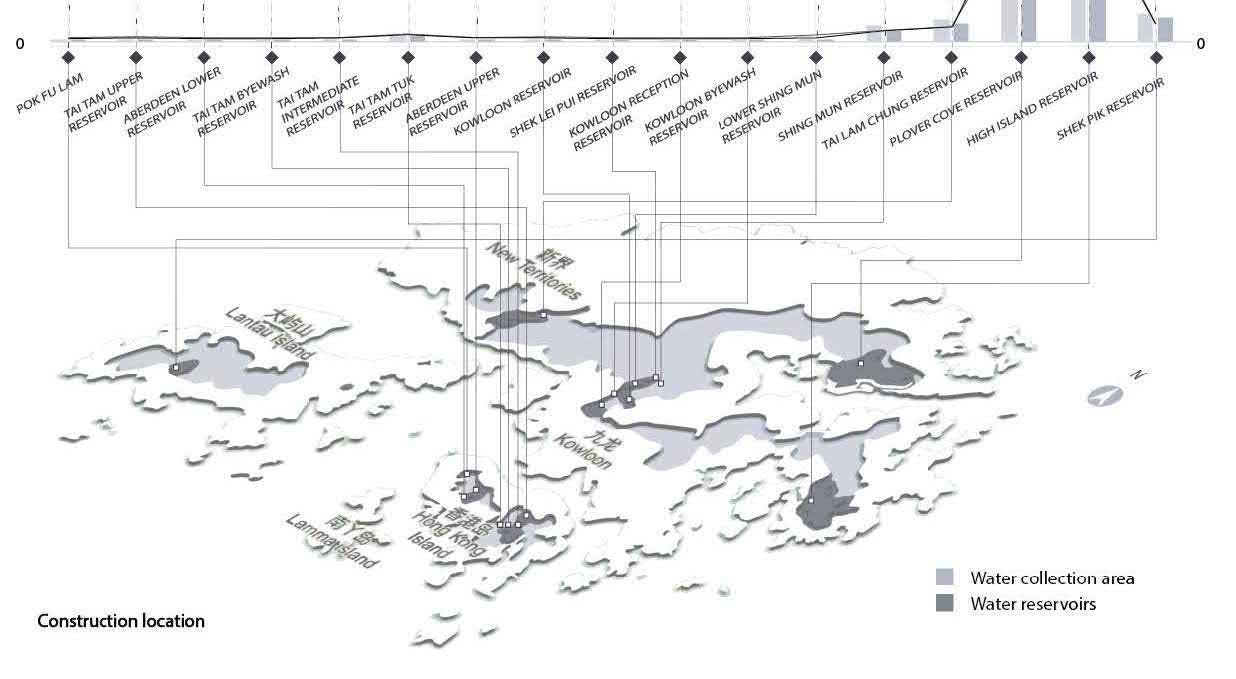

Thesis Preparation introduces students to the basic parameters of a thesis and equips them with the necessary skills for carrying out their thesis research in the spring semester. The course provides an overview of common practices of qualitative research in landscape architecture and other built environment disciplines. Course assignments are designed to help students to define the scope of their thesis, frame relevant research questions and arguments, and become familiar with the types and usage of reference materials for their projects. Lastly, the course enables students to articulate a critical intellectual position through the development of a tentative thesis topic, and by doing so deepen their understanding of the significant role of research in design practice. The is principally a seminar course with the Instructor serving as discussion leaders. The course comprises of lectures, discussions and other specified in-class activities. Weekly readings are provided as references to help students complete their coursework.
Through immersive activities, students will become more familiar with the basic principles, common concerns and requirements of landscape architectural practice, including an understanding of: behaviour, ethics and professionalism; landscape services and consultancy; project team, practice and construction management; procurement and contract requirements. During the course, visits to both landscape practices and an active landscape construction site will be arranged in order to gain experience of the key procedures and activities required to manage a design office and to understand the procedures of managing a construction project to ensure successful realisation of the designer’s vision on site. Due to restrictions from COVID and the large group size these may be done virtually. Students without site safety green cards will be required to attend a one-day Construction Industry Training Authority (CITA) approved safety training course. Students were given the opportunity to consider post-academic, working life by adopting professional working outlooks and habits across weekly sessions. Utilising immersive activities, students were able to become more familiar with the basic principles, common concerns and requirements of landscape architectural practice, including an understanding of: behaviour, ethics and professionalism; landscape services and consultancy; project team, practice and construction management; procurement and contract requirements. Visits to practitioner offices, safety training and live construction sites assisted in the absorption of learning.
Landscape Technology I dealt with the way landscape architects work with the land itself, shaping expansive landscapes and constricted urban sites. Lectures in the course addressed topics such as site analysis and responsive site planning, the design of structural elements, soils and earthwork, treatment of existing vegetation, storm water infrastructure and management, and site layout and road design. Within the course activities, students learned how to design and estimate cut and fill earthworks, and how to use contours to clearly illustrate designs, plotted the extent of water catchments, and designed paths and steps to resolve access between levels in accordance with regulatory requirements.
Students surveyed levels and plotted contours on an allotted slope on campus, using both a traditional surveyor’s level and electronically using LIDAR for example. They mapped the surveyed information on plan, plotted accurate sections and produced short videos reflecting on the advantages and disadvantages of the different survey methods.
In the final assignment, students produced a design for the slope they had already surveyed, incorporating ramps, steps, seating and an outdoor teaching space, producing a basic set of working drawings including as-built, general layout and levels plans, sections and details.
The course included field trips to the waterfall area of Hong Kong Park to look at a designed topography, the HKU campus to investigate various engineered slopes and stormwater infrastructure, and Tseung Kwan O to explore large-scale slope works and landscape improvement of former borrow areas from which fill material for land reclamation had been extracted. We visited the Department of Civil Engineering where Dr. Huang Peng explained his team’s ongoing research into the ‘Impact of Different Factors on Hyporheic Exchange in a Meandering Pool-riffle Stream’ intended to help redesign river channels so they can serve their flood-prevention function, boost ecological diversity and improve their appearance.

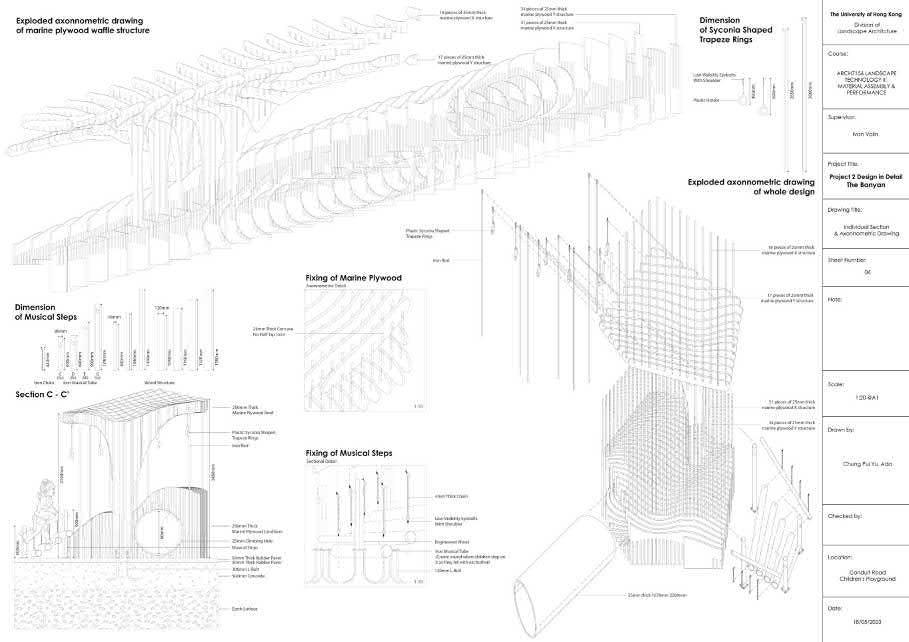
This advanced course in the MLA Technologies explored issues of materiality, detailing, fabrication, and performance in built works of landscape architecture. Through a series of case studies and site visits, the course discussed the relationships between material selection, implementation, and design intent across the range of project phases. The course was divided into three sections dealing with materials, assemblies, and documentation. The first section, Observations in Material Assemblies, introduced students to the most common hardscape and structural materials found in built landscapes. Lessons and discussions covered concepts of material origins, performance, and life-cycle considerations. Key material properties were explored, along with how the materials are worked, finished, and maintained. The second section, Detailing for Performance and Sustainability, examined how materials and structures combine to form paths, stairs, pools, decks, seating, screens, walls, canopies, and other features in the landscape. Students learn essential detailing and structural strategies for working in dynamic landscapes and environmental contexts. Finally, the course covered the logic and standards behind landscape architectural documentation in the design development, construction document, and fabrication stages. Together, we visited a number of sites across Hong Kong where best--and worst--practices could be observed and discussed.
take this information only, not full page 2. 1.


1. Students documented existing landscape structures and details during site visits, such as this pavilion in Wan Chai By TANG Haoran and QUI Xinyun
2. In a final exercise, groups of students redesigned a play-structure for material engagement. The exploded detail axon is By CHUNG Pui Yu, working with group including KONG Ho Hin, LUENG Tsz Long, and TANG Shiyi

Instructor
Teaching
This course enables students to develop an understanding of key ecological principles, and appreciate how these principles underpin successful landscape design and plant selection. Students were introduced to the main ecosystems of Hong Kong and the concepts of succession, biodiversity, habitat structure, and ecosystem stability. The design component introduced the history, basic principles, vocabulary and process of planting design. Students examined the aesthetic, functional, and ecological characteristics of plants, how they vary over time, and how the designer interacts with these processes. They were encouraged to investigate how these concepts and principles contribute to the success (or failure) of urban landscapes and habitat creation and are an essential tool in successful landscape design. In terms of horticultural knowledge, students were expected to familiarize themselves with a basic plant palette of commonly found plant species representing a range of urban and rural habitats. Field trips included visits to the HKU campus and Lung Fu Shan Environmental Education Centre, urban Sai Ying Pun, rural and coastal habitats near Tung Chung on Lantau, Central Ferry Piers, West Kowloon Park, a half day soil workshop hosted by David Sheil in the Lam Tsuen Valley, and a visit to the Tai Tong Tree Nursery of the Agriculture, Fisheries and Conservation Department of the HK Government.

Ecological restoration and enhancement are growing areas of landscape practice, encompassing mitigation projects such as stream course restoration, quarry and landfill rehabilitation, constructed wetlaxxxXnds and seawall enhancement. These are often generated in Hong Kong through the need to mitigate or compensate for damage to existing ecological areas (or consequential impacts) resulting from residential and infrastructural development. ARCH7153 is a survey course that explores ecological restoration from the perspective of the landscape architect, looking first at ecological definitions; historic andcontemporary debates over the contest between ecology and development; the possibility of landscape and ecological mitigation within the EIA process; and then at the strategies and techniques commonly used in ecological restoration work.
Site visits to restoration projects- Ho Chung River revitailsation, HK Wetland Park, and Shek O Quarry restoration- were supported by excellent case study presentations from expert practitioners: Liz Leven, Dr Mike Leven and Tony Nip. In addition to annotated bibliographies and a short essay on ecological mitigation, students created ecological maps, habitat descriptions, and an ecological restoration proposal for abandoned farming areas within the Ho Chung Valley. ARCH


One of the major differences between Landscape Architecture and Architecture is an appreciation for, and understanding of, horticulture and arboriculture and their influence on the design process.
This course addressed most of the common issues and was geared towards providing the student with the basic knowledge required in order to make informed decisions and produce relevant designs regarding the horticultural aspects of Landscape Architecture. The course dealt with botanical and horticultural principles and practices in relation to design. It covered the hierarchical nature of the plant kingdom, the physiological relationships between the structure and function of plant organs; responses of plants to environmental factors: gaining an understanding of the techniques used for plant multiplication: practical techniques for plant installation; how to manage the planting of interiorscapes, roof structures and green walls; the management of landscaped sites in terms of nutritional requirements; and control of pests and diseases and the selection of grass types for a range of uses. The course also looked at the essential Contract Documentation required for the letting and subsequent management of both landscape implementation and maintenance contracts.
This course was presented online apart from the occasional site visits, and was designed to provide students with the essential background knowledge required to successfully manage trees in urban landscape. After taking an initial overview of the physical and commercial contributions that trees make to the overall quality of life in the urban areas, we then looked at Trees and the Law and the obligations faced by managers who are responsible for trees in facilities coming under their “duty of care”.
An important part of the course looked at how to assess/appraise trees suitable for transplanting and under what circumstances they can be transplanted considering various site constraints, species limitations, and tree ages. After reviewing the difficulties associated with, and the techniques developed for, the preservation and protection of trees within construction sites in Hong Kong, students learned how to manage the overall process beginning with the early assessment of the site through to the provision of physical protective measures including various management strategies for handling contractors and frontline workers. Finally, students were introduced to the value of conducting and using Inventories in the management of the urban woodland.

This course examined the complex relationship among quality and characteristics of urban environments, especially landscape settings, and human’s psychology, behavior, and wellbeing status. The main objective was to promote designers’ critical thinking skills, research skills, and encourage evidence-based design approaches. The course led students to observe, analyze, and understand people’s mindsets, behaviors, and status in their daily life within a specific physical, cultural, and economic context. Then, students could use the knowledge and skills to develop their own design philosophy, methods, and concepts for creating appropriate living environments for people. The course demonstrated and explained theories, scientific evidence, and design cases in multiple types of landscape settings. Each class included a short presentation & comments time, and a formal lecture.



Responding to contemporary ecological pressures and current high demand for infrastructure development worldwide, this course brought together a series of thinkers and researchers from the design commons across Eurasia to discuss different methods, models and measures of large scale, long range infrastructure projects for the 21st century. This course challenged the commonplace assertion that the work of infrastructure remains invisible until it fails. Instead, It opened a horizon on infrastructure’s cultural valence that remains primarily symbolic — of technological development, of political patronage, of resistance to sovereign power. In addition to the weekly guest lectures and occasional screening of films, students worked in pairs to develop a videographic essay. Focusing on the multilateral transnational infrastructure development projects at China’s borderlands that are playing a significant role in current Chinese initiatives to create transnational China-centric development corridors, these videographic essays explored the following questions: How are environments and infrastructures built? Who builds them? What materials are required? What influences and forces act upon them? How are they changing? Through digital means, students explored and interpreted historic spatial processes and contemporary ecologic patterns to open a new lens on urbanization, where representation is, in and of itself, a form of research.
ARCH 7342

Instructor : JIANG Bin
Teaching Assistant: QIAO Lin
The course examined the complex relationship among quality and characteristics of urban environments, particularly landscape settings, and human psychology, behavior, and well-being status. The main objective is to promote designers' critical thinking skills, research skills, and encourage evidence-based design approaches. The course led students to observe, analyze, and understand people's mindsets, behaviors, and status in their daily life within a specific physical, cultural, and economic context. Students then used the knowledge and skills to develop their own design philosophy, methods, and concepts for creating appropriate living environments for people.
The course demonstrated and explained theories, scientific evidence, and design cases in multiple types of landscape settings. Each class included a short presentation & comments time, as well as a formal lecture.


London Wetland Centre Biodiversity and Land Use Analysis in Present by KONG Ho Hin
Instructors : ECHEVERRI Natalia WANG Ting
This seminar introduced key concepts of materials flows and examined the use of local materials in contemporary landscape architecture. The course used the exploration of material qualities as a tool to understand wider concepts of sustainability, urban resources, as well as fabrication and analysis technologies. Topics explored throughout the course ranged from the role of waste materials and circular economy concepts to the exploration of a specific material and its peculiar analysis. Students were asked to challenge theoretical frameworks through rigorous research and testing of a local material.
The course was structured around three assignments with reading/writing, design research, and material analysis/fabrication components.
Through deep reading, students were first introduced to different aspects and topics in the field of landscape materials. In a mapping assignment students reflected on the complex systems and flows around a material used in Hong Kong’s landscapes and translated findings, observations, and data analysis into an intrinsic, complex drawing. In the last assignment, students prototyped material components made of local resources.
This elective course delved into the subject of advanced ecological design, focusing on wetland creation, remediation, and other ecological restoration techniques. The course material covered historical and traditional approaches to wetland restoration, surveyed restoration and remediation typologies, and their ecological and hydrological characteristics. Additionally, we explored considerations behind wetland planning and implementation, reviewed policy and regulatory frameworks supporting wetland creation in mainland China, and examined emerging technologies in artificial wetland creation and enhancement. The course integrated site visits and case studies with topics drawn from the experiences of engineers, hydrologists, and ecologists, as they worked alongside landscape architects. Students traveled to mainland China for site visits in Shenzhen and Wuhan, where they had the opportunity to visit a variety of contemporary projects and meet with local specialists and professionals in the field.

This design studio, the first in the PDLA+MLA curriculum, introduced the fundamental skills, concepts, and practices of the landscape architecture discipline. Projects in this course allowed students to engage with sites and with environmental systems in Hong Kong. These fundamentals were rooted in an exploration of reading and representing place, relation, material, time and process. The studio emphasized drawing and modeling techniques not only as a creative tool, but also as a documentary research method based on critical thinking. Design here emerged as a technical and specific response and sites are understood as valuable pieces of a broader (eco)system.
This year, through two projects, the course explored the relationship between biotic and abiotic components and their intrinsic roles for envisioning natural networks. Students focused their interventions on the flood plain and seasonal wetland along the back of Pui O beach where they examined a seemingly undifferentiated ground and draw-out the complex interactions between soil, vegetation, water, and climate through a series of analytical tracings, site investigations, and strategic interventions. Themes during this course included material systems, dimension, typology, pattern, indeterminacy, and simulation.
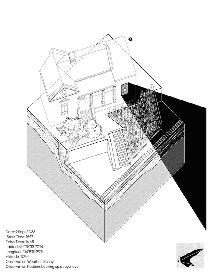










Teaching assistants :
Rewilding the City: Exploring Nature/Human Relationships in Urban Hong Kong
TThis studio explored landscape design under contemporary theories in urbanism, geography, and sociology, that consider ecological, social, and political processes as part of a single complex system. Critiquing the potential anthropocentric bias in analyzing these systems, the studio also explored the potential of non-human perspectives to frame design strategies.
The studio focused on King's Park, one of Kowloon's "green lungs" and an open space fragment surrounded by dense urban development. Despite some prominent geological features, the park has changed dramatically since the 1900s, with major transformations a t the turn of the 20th century and again in 1960. For the first project, students worked on the extended region of Kowloon that surrounds King's Park, assembling a catalog of animal “agents” who made their home or passage on the site. Students diagrammed species’ environmental needs, their movement ranges, energy flows, and human interactions. In Project 2, students then examined the current conditions and histories of the King’s Park to draw the site speculatively, revealing patterns and processes from a moment of significant change.
In the third and final assignment, students designed a sequence of 'wild' classrooms for local schools and bird watching/nature groups. The projects explored designs for human and non-human occupants, and engaged with the sites many layers (historical, ecological, geological, material).





This course combined the two primary technologies employed by landscape architects to shape space and function in the landscape: landform and planting design. The threedimensional literacy and observation skills required to articulate these elements were introduced through various landscape representation techniques.
Assignments consisted of an Existing Section Drawing Assignment in which students measured and drew to scale a wooded area of the campus, a Topographic Design Representation Assignment in which students created a model of an imaginary landform and translated it into a scale contour plan and section, and a Planting Design and Representation Assignment consisting of a planting plan for the reinstatement of a small park on a site previously resumed for a COVID quarantine facility at Kai Tak. Field trips were essential for understanding the relationship between planting, topography, and human intervention and behavior in the landscape.
Urban visits included Yuen Long Town Park to explore a well-established designed open space, a cross-sectional walk through Sai Ying Pun from the hillside woodland above the HKU campus to the harbor front at the Sun Yat Sen Memorial Park to look at the urban context, and West Kowloon Park to experience a relatively recently designed and planted l andscape.
During a visit to ArkEden on Lantau, students watered and applied fertilizer to tree seedlings planted on eroded slopes, sketched the landscape from life, experienced the reality of natural topography and how it corresponded with contour maps, and observed children’s nature-based education in action. At the end of the course, students reflected on their experience of the course and demonstrated that they had gained invaluable skills and insights into the basics of the technologies and techniques required for landscape design.





Disciplinary Explorations
What is landscape? How might it be interpreted, engaged, represented, described, classified, and shaped?
ARCH1029 Introduction of Landscape Design: Disciplinary Explorations is the first course in the History and Theory sequence and explores landscape architecture as a profession, an academic discipline, and a medium or an idea. As an introduction to the topic, students were challenged to think critically about landscape in ways that shaped an expanded understanding for the relationship between individuals and the environment. This expanded understanding was developed through the actions of looking, interpreting, reading, discussing, and ultimately representing landscape. Each of these activities helped reveal the layered conditions, relationships, and processes embedded in any landscape.
The sequence of lectures was topically structured with each week focused on a particular framing or expression of landscape. The assignments of the course encouraged students to analyze the meanings of landscapes through text, images, and films. The final project of the course asked students to describe and critically analyze a Hong Kong landscape and the values it expressed through films and videos using concepts discussed in lectures, tutorials, and the course readings.
ARCH7159 / ARCH2203 BA(LS)
Instructors : MAK Vincci Mak CHU Cecilia L.
Teaching Assistant : CHEN Xinhui
What were the extents and limits of architects, landscape architects, and planners’ power to affect environmental and social change? How did they work with different communities and stakeholders to bring about betterment in people’s lives? What were the paradoxes in today’s design practice with the advent of neoliberal urbanization and concomitant crisis in housing, public health, environmental protection, and infrastructure provision?
What assumptions did different built environment professionals hold about the merits of their work and to what extent could these be seen as extensions of their ideologies? What reflexive knowledge did designers, policymakers, and community members need to acquire in order to address the multifaceted problems we were facing in a globalizing world?
This seminar provided an introduction to the intertwined concepts of environment, community, and design and explored the contexts that shaped their relationships in diverse localities. In contrast to conventional taught courses, significant emphasis of the course was placed on student-led activities designed to facilitate active learning through rigorous debates and participation. Weekly seminar topics were structured to provide a systematic introduction to key ideas of the social roles and ethics of design practice and explore the nature of emergent design activism in recent years. It also introduced students to different methods of studying the built environment and communities.
This course was taught in two parts. Part A (Week 1 to 7) introduced foundational perspectives on environment, community, and design, with case studies to explore design practices that implemented these ideologies. Part B (Week 9 to 15) focused on the politics of planning and emergent concepts of environmental futures (details to be provided at a later date). Throughout the semester, focus was placed on connecting theoretical concepts with practices via close examination of international and local case studies. The ultimate purpose was to help students develop a critical understanding of the complex forces that shaped the built environment in the past and present and reflect on the multi-faceted challenges facing design practitioners in the 21st century.
This course aimed to critically introduce and explore the media of landscape and representation skills like drawing and fabrication. We expanded and punctured the boundary of the media of landscape, the media of drawing, and the intervals between them. The drawing in landscape architecture, as James Corner described, can be “a plot, necessarily strategic, maplike, and acted upon in essence.” We thought of drawing landscape as a process which let us to experience and express what we saw and conceived, and moreover, to speculate and construct in the physical space.
This course provided students with a foundation knowledge and skills into: landscape and site appraisal via site observation; making and reconstructing landscapes via digital tools; spatial analysis via landscape visual representation. Particular attention was paid to understanding the complex mechanism in the dynamic, projective, and dialectical constructed network of design, media, and imagination. Assignments included exercises in which students can practice and be familiar with the new graphics skills they obtain from the course lectures. Three assignment projects were built upon one another to form a learning process. The students are required to develop their own methodologies for communication and design.

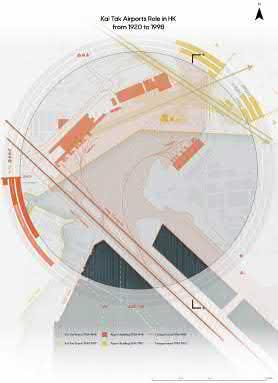

This course introduced students to essential digital and manual tools of design and representation in landscape architecture. Students explored techniques in material testing and digital fabrication as an iterative part of the design process with digital platforms and procedural tools as key elements of a cross-media approach to digital production. Shifting from material analysis to visual programming and 1:1 fabrication, the course covered a variety of scales and modes. Three projects transformed the products of material observations into design methodologies and created an understanding of abstraction, rigor, and transformation through experimentation.
In the first project Material Diaries, students envisioned a future landscape material and explored its potentials theoretically and practically. The hands-on testing equipped them with a sensitivity for designing with a range of materials and relevant production processes. The second project Shaping Material & Terrain focused on parametric 3D modelling and digital fabrication technologies. It created familiarity with technologies of computational design and handle a range of tools for digital fabrication available within the faculty. Drawing inspiration from these two assignments, students developed in their final project a one-person seat or shelter. Material testing and tools of digital site analysis were ongoingly explored to help shape the device. Students worked with a combination of digital and analogue fabrication techniques; drawings, mock-ups, and a 1:1 prototype to communicate and test their design.




This seminar looked at landscape as an assembly of natural systems (geological, hydrological, climatic, and ecology) in continuous dynamic interaction with human systems (building development, urban infrastructure, materials / waste). Through landscape case-studies, readings, and technical and creative exercises, we examined some of the theories that underpinned our ideas of landscape, and explored relationships between the built and the natural, at site, district, and territorial scales.
The course helped develop foundational skills in reading landscapes and ultimately for assessing their specific qualities and functions, as well as reflecting critically on terms commonly used (and abused) in practice at that time such as sustainability and resilience, performance, and productivity. The course critically looked at the change of landscape over time and identified some of the most important factors that had been shaping landscape to the current land mosaic.





In fact, nature itself did not offer only us humans anything in particular. Instead, we reacted to and formed a part of the earth’s embedded cycles. We naturally relied on all our senses, in addition to sight, in our everyday lives, yet for some reason, we did not routinely utilize these senses for design. If we broadened our awareness, we realized that the information we saw with our eyes, frequently obtained from the computer screen, compared to the input we heard from our ears, might be completely different, just as when we touched and smelled something, we might also wish to experience how the taste corresponded.
This exhibition explored the possibilities of designing new landscapes from such a natural, immediate, and sensorial point of view. Rather than relying solely on the visual and producing work that remained only at the level of drawing, students spent time outdoors and around the city to observe and collect various little plants that were often overlooked, such as common weeds. With these plants that composed our everyday environment, students considered their own landscape design potential based on firsthand experiences and discoveries, such as color, scale, scent, texture, growth patterns, and originating locales. Through these new and classic methodologies, first-year PDLA students expanded their understanding of Hong Kong’s day-to-day surroundings and inherent values to create their own new small landscape designs.







The Thai-Myanmar Border Studio builds on ten years of design-based experiential learning across mainland Southeast Asia for our landscape undergraduates, where students spend one term engaging large-scale development problems via landscape architecture. This year, students focused on landscape planning strategies for a series of controversial and long-delayed development projects along the Thailand-Myanmar border, including hydropower on the Salween (Thanlwin/Nujiang) and Yuam rivers, a coal mine concession in Chiang Mai province, industrial zones in Mae Sot, and the planned large-scale water diversion tunnel from the Salween to Chao Phraya basins.
For 10 days in mid-March, students traveled roughly 600 kilometers overland and met with several environmental and human rights groups, including International Rivers, The Border Consortium (TBC), Karen Environmental and Social Action Network (KESAN), EarthRights International (ERI), indigenous community groups, and academics from Chiang Mai University and Chulalongkorn University. After returning to Hong Kong, students individually spent 8 weeks proposing landscape planning strategies that together: reacted to strategic and long-running resistance through community mapping, villager research or citizen science; addressed power and knowledge in reforestation programs; enabled or nurtured multiple migration pathways in the agricultural sector; and confronted infrastructure investment and contested value systems in dual-governed regions. Students had their proposals juried by a panel of experts from sociology, ecology, and geography, in addition to designers and planners.



1. Students meet with the Karen Environmental and Social Action Network (KESAN). Photos by Saw Yu Nwe
2. Students discuss community mapping with Omkoi Women’s Group, Chiang Mai Province, Thailand
3. Students meet with Mae Ngao indigenous people’s network, Mae Hong Son Province, Thailand
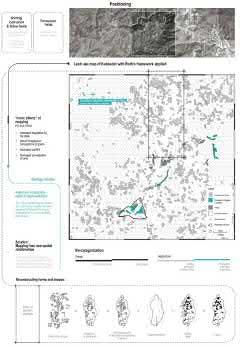




1. "Dimensioning indigenous knowledge: A Village mapping toolkit for countering rapid assessments of Karen communities at Omkoi, Chiang Mai province" by CHENG Wai Jon Joni
2. "Indigenous-led forest restoration: From community impact assessment to ecological potential in the uplands of Chiang Mai province" by LEUNG Wing Yan Kitty




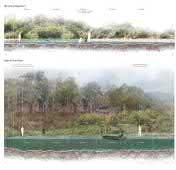
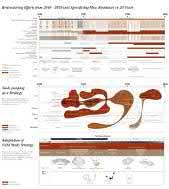

1. "Situating science, impact scope and strategies for slow resistance on the Yuam River and its tributaries in northern Thailand" by LAI Man Ki Maisy
2. "Training and trafficking: Producing new pathways for migrant labor through the agricultural landscapes of the ThaiMyanmar border" by LI Ziyuan Lena
Landscape Design Studio I
Instructors :
Teaching Assistant: WONG Michelle
“The motif is the foundation of a work. It provides logical development and form. The motif has emerged during improvisation through the influence of the stimulus, your imagination (the choreographer) and your movement interpretation of the two.” (Fiona Smith, Lucy Pocknell, 2010)
Landscape Design Studio 1B explored the elements and principles that underpin landscape design. This course moved on from the previous studio where objects and situations were pre-determined by generic site constraints, minimal program, and archetypal users. Instead, students addressed a real site, an open-ended program and an undetermined number of users. In parallel, Studio 1B built upon previously acquired knowledge and skills.
This course proposed the concept of Motion as the main concept to explore. It was structured around two complementary projects, both aimed at expanding and consolidating foundational landscape design vocabulary. The first project reflected on worldwide case studies related to the discipline which deal with abrupt topographical changes. Through the use of research and application of different means of representation, students developed a series of transects and composite drawings to describe the spatial configuration and relations in each of the cases. In the second project, students intervened an area in Sai Ying Pung dealing with existing infrastructures and public equipment along the Hong Kong waterfront promenade.
The exercises and workshops included within these two projects delved into the concepts of scale, proportion, hierarchy, boundary, uniformity of area, and human proximity.






Landscape Design Studio 2 continued the exploration of landscape design where students investigated the spatial, experiential and temporal aspects through various design exercises with an emphasis on developing visual thinking skills. This studio introduced a variety of site inquiry methods at a site scale that required students to consider users, programming and context in their design.
The site chosen for the project was Po Toi Island. Locating at the southern tip of the Hong Kong territory, Po Toi Island has unique geology and rock formation, making it one of the most popular hiking destinations in Hong Kong. Each student designed a refuge in the landscape along the existing hiking trails on the island, to provide hikers a rest-stop along their way. From finding inspirations, learning from the rock and geological formations, students were able to further study and explore both the scientific and cultural aspects of the rock formations within the island. They then moved onto landscape tectonics, creating physical models which reflected movements in both nature and design. From there, students learnt from inspirations and started developing their design concepts for the refuge, followed by embracing ephemeral qualities of the site and designing their refuge as a part of a greater network.

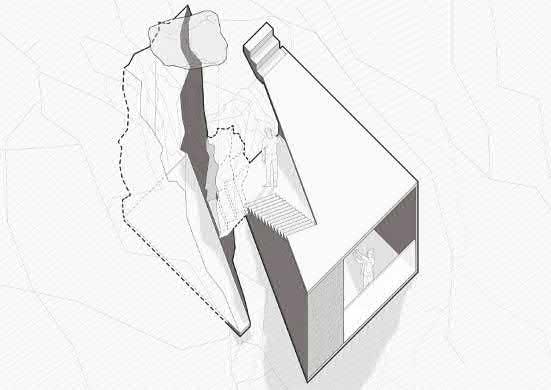


space in an urban void to enhance light of the desire to gather and cycle up a public space where people severe level changes, the design allow open views and easier access, lanes and areas to play with water. This gathering in the nullah, in which benefits the
Teaching Assistant: MAN Pak Him Jay
The rehabilitation of channelized waterways back into more naturalistic landscape forms - was a growing area of landscape architectural practice around the world, as some of the leading examples could be found in SE Asia. It required detailed understanding of ecology, hydrology, civil engineering, and community issues, as well as landscape design and construction processes, in order to achieve sustainable improvements. We took DSD's proposed revitalisation of the Tai Wai Nullah as the subject of the course. The nullah's corridor had a rich blend of natural and human histories that encompassed natural woodland and ecological habitats, traditional village settlements, high-rise housing, commercial and institutional developments, and massive urban infrastructure.
TAI WAI NULLAHThis studio explored landscape as a product of interactions between natural and manmade systems (rather than just as a set of objects). It helped students to develop skills in researching, observing, interpreting, recording, and representing the landscape and to expand students' abilities to analyze, conceptualize, and present integrated and meaningful designs for site-scale landscape interventions.
The studio emphasized the use of physical models, aligned with analytical drawing, as essential steps in the design process and as a way of conveying spatial forms, material qualities, and narratives of past histories, current activities, and possible futures. Through these, we could gain insight and understanding of the interrelationships, connections, adjacencies, dependencies, pathways, etc. inherent in every landscape and use these to develop coherent rationales for designed intervention.
A few curves were drawn to mimic the natural shape of river.
The existing low-flow channel is in linear form, which would be diverge into curvy form of branched streams.
A main stream flows through the curvatures, turning into a potential area for specified activity.

The overlapped area between curves turn into potential activity, greening and planting areas.

At last, functions are given to different shapes and areas.
The overlapped area between curves turn into potential activity, greening and planting areas.
The main curves are further developed into smaller curves, to shape the detailed seatings and planters.
The main curves are further developed into smaller curves, to shape the detailed seatings and planters.
At last, functions are given to different shapes and areas.





Landscape Design Studio 4 investigated the role of playscape in Hong Kong and analysed the topic typologically, morphologically, and socially. The course focused on concepts of community design, paying attention to the role of society and urban context in the design process.
This course’s assignments did not only aim to propose design solutions, but to also understand how Hong Kong’s urban landscapes are made, managed, and maintained. Understanding public open space as a common good, students reflected the needs of the community and embraced the presence of diverse stakeholders.
In the first project, students used walking as a tool to document public space in the neighborhood and to uncover tangible and intangible narratives of the area. Based on workshops and readings, students then developed strategies hinged on communityoriented practices in landscape design.
The second project introduced urban playscapes through typological study. In their final proposals, students developed site-specific topographic playscapes for Third Street Playground and Kwong Hon Terrace Garden, two playgrounds set to undergo modification within a five-year period as stated in the Chief Executive’s 2019 Policy Address.








The Plants and Planting Design course approaches the role of planting in landscape design from two main areas of study, namely planting design and horticultural knowledge in the context of various habitat types. The planting design component introduced the history, basic principles, vocabulary, and process of planting design, along with the aesthetic, functional, and ecological characteristics of plants, how they vary over time, and how the designer interacts with these processes. The horticultural component provided an introduction to plant anatomy and physiology, the interaction between plants and their surroundings, nursery production, planting specification, and maintenance.
Assignments included a Plant Reference Assignment which required students to go out into the field and record plants in rural and urban habitats. A Plant Section Assignment tasked students with producing accurate hand-measured and hand-drawn plans and sections of wooded areas on the campus, focusing on the structural reality of the trees and other vegetation and how they interrelate with one another, the topography and adjacent built structures. Finally, students produced a planting design and planting plan for a proposed public open space.
Students were expected to familiarise themselves with a basic palette of commonly found plant species, representing a wide range of urban and rural habitats in Hong Kong. At the end of the course a plant identification exam was held in which students were required to provide the botanical names of plant samples and photographs.
The course hoped to encourage life-long investigation of plant species and their application in any given environment from an experiential as well as an academic standpoint. Field trips included HKU campus, a visit to Tung Chung to explore coastal and village habitats, and Ark Eden at Mui Wo on Lantau to experience former farmland and hillside woodland and scrub habitats. We also joined a soil workshop hosted by David Sheil at the Lam Tsuen Valley, and were introduced to native tree propagation at the Tai Tong Nursery run by the Agricultural, Fisheries and Conservation Department of the HK Government. Instructor


This course approaches the role of planting in landscape design from two main areas of study, namely planting design and horticultural knowledge, in the context of various habitat types. The planting design component introduced the history, basic principles, vocabulary, and process of planting design, along with the aesthetic, functional, and ecological characteristics of plants, how they vary over time, and how the designer interacts with these processes. The horticultural component provided an introduction to plant anatomy and physiology, the interaction between plants and their surroundings, nursery production, planting specification and maintenance. Students were expected to familiarize themselves with a basic palette of commonly found plant species, representing a wide range of urban and rural habitats in Hong Kong.
Assignments included a Plant Reference Assignment which required students to go out into the field, record plants, and produce video ‘virtual field trips’, one in a rural habitat and one in an urban habitat. A Plant Section Assignment tasked students with producing accurate hand-measured and hand-drawn plans and sections of wooded areas on the campus, focusing on the structural reality of the trees and other vegetation and how they interrelate with one another, the topography and adjacent built structures. Finally, students produced a simple planting design and planting plan for an urban courtyard.
Field trips were a mainstay of this course, providing a multitude of real-life situations where the reciprocity between horticultural knowledge and design intent, and the longterm successes and failures of planting designs, could be observed and discussed on site.
Field trips included a visit to Hoi Ha Wan hosted by Friends of Hoi Ha to learn about and experience coastal, woodland and village plant habitats, a visit to Kadoorie Farm and Botanic Garden to see their native tree nursery and forest regeneration initiatives on formerly denuded hillsides, and tours of the HKU campus itself.




This course seeked to enable students to develop an understanding of ecology and biodiversity and how the integration of ecology in landscape design can improve the liveability of cities. The course investigated vegetation succession, animal and plant interactions, urban biodiversity, biological invasion, creation of microhabitats in urban greeneries and ecosystem services of urban vegetations. The global trend in ecological landscape design for climate change adaptation was highlighted. Global and local case studies on urban biodiversity designs were illustrated.
The course was designed to introduce the fundamental principles of ecology and sustainability by means of lectures, and assignments, reinforced with site visits illustrating the concepts discussed in class. Students used the site visit experiences to analyse ecological aspects of the existing landscapes and undertook an assessment of an existing landscape in terms of its sustainability.
As with any art or science, the successful practice of landscape architecture was dependent on a comprehensive understanding of materials and their related technologies. In landscape, we could choose from a very broad spectrum of materials from the natural to the artificial, from the inert to the organic, and deploy them over a wide range of physical and temporal scales. Technology in Landscape Architecture explored components of the natural landscape, how we could manipulate them to form new landscapes, and how the processes of doing so could be a methodology for design.
The course covered the key topics of landscape design, which built on each other to develop an understanding of basic landscape elements of the landscape and how they fit together. Typically, each session started with a short introduction to the week’s topic, followed by a series of in-class exercises/assignments relating to the topic.
This course is designed to foster habits of accurate and disciplined observation, as well as imaginary flair, and to introduce students to a range of hand-drawn illustration skills and techniques that they can draw on throughout their careers.
The first of three sections, Illustrating Landscapes, focused on the highly detailed representation of a 350mm square area of ground at 1 : 1 scale, followed by abstract interpretations of the same area. The process was then reversed, and students were asked to produce abstract blots, then to reinterpret these as imaginary, figurative landscape drawings.
The second section, Projecting Landscapes, required students to make a three-dimensional model of an imaginary landscape, which was then represented using contour drawings and sections. This was followed by perspective drawing techniques, where students produced perspectives of buildings on campus and these were then reinterpreted as collages.
In the third section, Dynamic Landscapes, students were introduced to life drawing of the human body, and still life drawing of plants, trees and vegetation. Finally, the life drawing, vegetation drawing, perspectives and other illustration skills were fused in before and after renderings of street scenes. Students drew the streets in their existing state and then reimagined them as pedestrianized precincts with street furniture, pedestrians and trees.

Landscape Representation II
Conceptual and Abstract Representation: Ambiguous Perception - Reimagining Public Space
Landscape Representation 2 introduced ways for students to utilize visual representation as a tool to represent conceptual and creative processes through a series of exercises engaging in Hong Kong’s public space and fluctuating urban nature.
Focusing on the observation of dynamic built environment and objects around us, students learnt to explore how drawings, models, and other representational tools are essential to the creative process of visualization as they provide opportunities for comprehending ideas in numerous ways. The connection between the creation of landscapes and their portrayal is crucial and throughout this course, students were able to experiment with an iterative process of documentation and speculative creation. To create a comprehensive and multifaceted understanding of landscape, students used diverse methods of depiction. From observation to documentation, to interpretation, imagination, and finally representation.

ARCH 3097 / ARCH 7176
Visual communications through graphics and models are key training elements and practices for landscape architects. When dealing with real-world built and natural environments such as urban, vegetation, topography, watershed, and ecological processes, it is critical to embrace technologies of digital representation, spatial analysis, and information generalization to better understand the complexity of landscape systems across time and space. As a good leverage and promising trend, Geographical Information System (GIS) is considered as a spatial environment for the synthesis of natural science intelligence for landscape architecture and design.
The main objective of this course is to empower our studies with i) GISystem – spatial and temporal skillsets of data collection, analysis, and visualization to address practical landscape studies; ii) GIScience – quantitative and interdisciplinary mindsets of problem finding, solving, and implications to deal with real environmental problems through research and practices.
A key feature of this course is to use pedagogies of combined lectures and tutorials to introduce a series of geospatial datasets, GIS analysis, and mapping technologies as research, design, and planning tools to decipher complex landscape systems, explicit environmental changes, and the underlying drivers from human and nature.



1.
2.
The dynamic and continuous evolution of technology impacts the way of making and understanding of our cities and territories. With the rapid technological advancement, several computer-aided technologies have been embedded in the design processes through a series of software packages which allow the exploration of new possibilities in the design methods, representation, modeling and fabrication. Furthermore, landscape architects shall be conscious of the available technological resources and the wide range of possibilities when dealing with problem-based design challenges. Likewise, they shall be critical of the proper use of controlled analytical and modelling techniques. Therefore, students in this course investigated and experimented with data visualization, form finding, parametric and digital fabrication technology by working on projects with specific programs and limitations. They explored new possibilities in architecture and landscape design for pursuing and improving the materialization of their concepts. Students learnt and applied a wide range of digital tools and methods to analyze, represent, model and fabricate. The course was structured with lectures, tutorials, research, discussion and design workshops to learn specific workflows. In addition, during this course, students got familiar with all the available equipment and tools at the machinery at the Faculty of Architecture’s Fabrication and Media laboratories.


Instructor : ETTEL Nikolas
Teaching Assistants : WONG Michelle
WONG Brandon Caraccioli
FAN Phoebe
HO Dai Rong Heather
ZHAI Qifei Frances
LIU Jiani Vicki
The Faculty Interdisciplinary Courses (FICs) are a year-long initiative aimed at all Firstyear undergraduate students of the Faculty of Architecture. AFIC1003 – On Agendas is offered in the fall semester and AFIC1004 – On Methods in the Spring.
The courses offer a multi-disciplinary perspective of the Built Environment disciplines - this year through the lens of research methods. Through collaborative projects, students became innovative team-players, equipped with creative problem-solving and communication skills. In addition, students has sharpen their awareness of the increasing inter-disciplinary nature of their chosen practice and thereby broaden their understanding of their responsibilities within an increasingly complex world. The goal is to develop shared interests and appreciation that help to form long-lasting, cross-disciplinary friendships for students’ future careers.
AFIC1004

Instructor : ETTEL Nikolas
Teaching Assistants
WONG Michelle
WONG Brandon Caraccioli
LI Zhiting Jasmine
MAN Pak Him Jay
WONG Nicole
CHEUNG Kyo
The Faculty Interdisciplinary Courses (FICs) are a year-long initiative aimed at all Firstyear undergraduate students of the Faculty of Architecture. AFIC1003 – On Agendas is offered in the fall semester and AFIC1004 – On Methods in the Spring.
The courses offer a multi-disciplinary perspective of the Built Environment disciplines - this year through the lens of research methods. Through collaborative projects, students became innovative team-players, equipped with creative problem-solving and communication skills. In addition, students has sharpen their awareness of the increasing inter-disciplinary nature of their chosen practice and thereby broaden their understanding of their responsibilities within an increasingly complex world. The goal is to develop shared interests and appreciation that help to form long-lasting, cross-disciplinary friendships for students’ future careers.
Art Gallery Review

The Master of Science in Architectural Conservation (MSc Conservation) was established at HKU in 2000 to provide professional training for conservation practitioners. With the relaunch of the programme in 2022, we continue that legacy and strive to ensure that our students’ experience is engaging, supportive, and designed to meet the many new challenges heritage professionals face today. These challenges range from climate change and global demographic shifts, to the fourth industrial revolution which blurs the lines between digital, biological and physical spheres, forever changing the way we live our lives, understand our heritage and protect our most valuable heritage assets for future generations. This new global context requires heritage professionals to develop a broader interdisciplinary understanding of heritage and a more comprehensive toolset for heritage conservation, embracing the indivisible link between our natural and cultural heritage nestled in diverse landscapes and ecosystems. Towards that end, the MSc Conservation programme was relaunched in 2022 to broaden and deepen built heritage and landscape conservation teaching and research within the Faculty of Architecture. The new curriculum, which emphasises the integration of heritage with Sustainable Development, aims to equip students with the technical competencies and intellectual skills required to guide decisionmaking in conservation planning, design and management in the 21st century. As part of the programme, students travel to internationally recognised sites of cultural significance to learn about the challenges of heritage conservation within the region and learn from the strategies employed by specialists to protect, enhance and revitalise these sites. This year students visited Singapore and Malaysia to experience World Heritage Sites and have discussions with leading specialists in both countries. With its internationally recognised expertise in architecture, landscape architecture, planning and building construction, HKU provides an ideal interdisciplinary setting for educating well-rounded conservation professionals and future heritage advocates. By joining our programme, students become a valued member of this active conservation community and have the potential to contribute to the growing scholarship and conservation work across the world.

Instructors : CHU Cecilia L. SHETABI Linda NG Debra Jean BRENNAN Bernard WU Roger
This capstone course facilitated student demonstration of competency in a selected specialization area through independent research. The thesis manifested as an original research piece within the conservation framework. Topics were chosen based on their relevance to students' interests and capabilities. The thesis process offered students an opportunity to express their own stance in relation to contemporary conservation discourse and to integrate the pertinent knowledge acquired throughout the MSc Conservation curriculum into their thesis project. Each student collaborated with a teaching faculty member as their supervisor and engaged in regular consultations and guidance with their advisor. Throughout the thesis process, students closely collaborated with their advisors, participated in periodic progress assessments, and showcased self-directed independent work in the articulation, development, and completion of a final research thesis. Students were expected to manage their progress to meet the required deadlines with satisfactory progress. To successfully complete the course, students were mandated to present their thesis project to a panel of reviewers, comprising professionals well-versed in the field, in a formal presentation. This presentation served as an opportunity for students to demonstrate their capacity to advocate for Conservation and contribute to the field's advancement.



The aim of this thesis is to create a curatorial framework and re-presentation approach in the heritagisation of marginalised histories. With a focus in Chinese diasporic histories, the interaction between materials, people and their networked society become the subject of inquiry. A theoretical framework has been developed to provide a method in telling the stories of material movements that interacts with place, its spatial production and the meshed network that connects them together. This understanding helps contextualise the gap between human and non-human entities in how they are represented. In doing so, we begin to recognise that cultural landscapes are not dynamically shaped by human forces alone but material forces as well. As well as theory, the physical spaces of diasporic representation has been investigated at both ends of the migration corridor. One located in the Wuyi region in PRC and the other in Vancouver, Canada, these case studies have been analysed in their effectiveness in the heritagisation of diasporic histories. These new forms of understanding in theory and in current museum practices have been applied to the reinterpretation of the Chinese-New Zealand hyphen. The material network in Chinse-owned economic spaces of production becomes the focus of this investigation. The value of understanding of such histories, is to give voice to an invisible past and providing an opportunity to legitimise their identities within a dominant society. Affect plays a key role in learning and unlearning of the material agencies of the marginalised societies within a dominant one.
This dissertation investigates the complex interplay of human and non-human entities shaping post-industrial ruin landscapes from posthumanism perspective, focusing on Hong Kong's Ma On Shan Iron Mine. This historically significant site serves as a case study to explore the transformative power of material agency. It challenges traditional anthropocentric perspectives of heritage interpretation and management by exploring the material agency of non-human entities and their influence on visitors' affectual and emotional responses. The research focuses on the interplay of human and nonhuman entities – magnetite, vegetation, and water bodies – in shaping the site's socio-cultural narrative. The study emphasizes the aesthetic and emotional allure of industrial ruins, and the concept of material agency in understanding these reactions.
By acknowledging the material agency of non-human entities, it posits that a more inclusive and sustainable approach to heritage conservation management can be developed, leading to a richer, multi-dimensional interpretation of the site's identity. This dissertation thus offers an innovative perspective in rethinking the narratives of post-industrial ruins and rewilded spaces, proposing an alternative approach to heritage conservation and interpretation that respects the continuous interplay of human and non-human factors in shaping such landscapes.

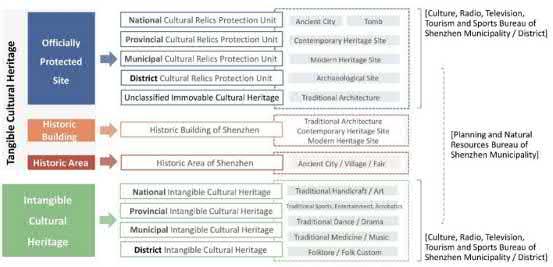
Shanxi is the province with the most cultural heritage in China, but due to imperfect policies, insufficient funds, and lack of attention by local residents, many heritage sites are not protected well. This study takes Jingxin Temple in Shanxi Province as an example, referring to the design and principle of ecological landscape, to explore the prospect of sustainable development of Chinese heritage from the perspectives of the management system, villagers' emotions and heritage conservation. The study found that the landscape approach can 1) protect the architectural structure and internal cultural relics of Jingxin Temple; 2) improve the resilience and resistance of Jingxin Temple to climate change; 3) reduce construction and maintenance costs, and involve the surrounding villagers in the protection work of Jingxin Temple.
Thus providing an alternative strategy to traditional heritage conservation and management approaches that often neglect the surrounding landscape and focus primarily on the built heritage asset.
The objective of this study is to gain a comprehensive understanding of how national planning and heritage conservation policies influence the relationship between heritage conservation and urban renewal in Shenzhen. Moreover, the study also aims to explore how Shenzhen develops its unique policies for the onservation of urban historic areas and urban village renewal, considering the city’s historical context, cultural positioning, as well as practical cases that exemplify these policies in action. Previous research has primarily focused on issues of social management and urban development, design approaches, and transportation aspects. However, none of these analyze the relationship between policy rhetoric, policy implementation, and the implications of these actions on urban renewal. This research adopts the qualitative research method, encompassing informal surveys and discussions conducted with a diverse range of individuals, including villagers, migrants, and other local residents guided by policy analysis and a comparative case study framework. The findings indicate that Shenzhen operates under the influence of national policies while simultaneously cultivating its distinct approach to self-development, resulting in the formulation of specific conservation policies.
This studio course is designed to help students apply the principles of a values-based approach to urban conservation and management to develop a Conservation Management Plan that retained, enhanced, and protected cultural heritage resources for the benefit of the public and future generations in a sustainable manner. Framed by the 5Ps of the SDGs: People, Planet, Prosperity, Peace, and Partnership, students engaged with cultural heritage management frameworks and tools to develop management policies and guidelines in support of conservation decisions and actions that protected,enhanced, and ensured the sustainability of heritage assets. Throughout the course, case studies were used to discuss various management issues that arose in the field of conservation.
The studio focused on select areas of Kowloon slated for revitalization in the Urban Renewal Plan for Kowloon City. The area had a mix of residential, commercial, civic, and government buildings with half being more than 50 years old; bearing unique historic and heritage significance. Through understanding and applying the principles of urban conservation, with a focus on cultural mapping, urban morphology, community participation, and spatial interpretation, in an advanced level of integrated architectural design and management planning, Design and Management students worked as a team to select a heritage asset of their choice for conservation. Although each team member submitted a separate assignment for grading, both assignments formed a cohesive conservation design and management solution. From Reading and Analysis of historic-demographic contexts, towards Planning and Synthesis of designmanagement resolution, the process was an interactive inquiry with stakeholders in the community, experts from relevant disciplines, and self-motivated exploration of critical issues on conservation by individual students in preparing their final submission.

Students of this course engaged with practical problem-solving exercises in the design and adaptive reuse of heritage buildings, sites, settlements, and landscapes in the context of Hong Kong, Greater China, and East and Southeast Asia. Building on the knowledge acquired in earlier core courses (i.e., preservation, restoration, adaptive reuse, new additions to a historic site, community engagement, and heritage stewardship, etc.), students researched and analyzed a specific study area, defined major problems and opportunities in conservation planning, and formulatedcontextually and culturally-sensitive design propositions. Supporting the main design project, several training sessions were organized to equip students with a range of technical skills, including aerial photography, photogrammetry, and GIS mapping techniques. For each assignment, students were asked to support their decisions with arguments, develop their analytical and advocacy skills through milestone presentations to a panel of invited reviewers that included professional experts and community stakeholders.
Framed by the 5Ps of the SDGs: People, Planet, Prosperity, Peace, and Partnership, that year concentrated on the main theme of Conservation and Community. Through understanding and applying these principles of urban conservation, with a focus on cultural mapping, urban morphology, community participation, and spatial interpretation, in an advancedlevel of integrated architectural design, geared to the local context of Kowloon City, the studio prepared conservation students to be equipped with grounded conservation knowledge. From Reading and Analysis of historic-demographic contexts, towards Interpretation and Synthesis of designmanagement resolution, the process was an interactive inquiry with stakeholders in the community, experts from relevant disciplines, and self-motivated exploration of critical issues on conservation by individual students in preparing their theses.





This course explored key critical issues in the field of heritage safeguarding policy and contemporary conservation practice. Through a combination of teaching and learning activities, students reflected critically on emergent global challenges to heritage safeguarding and the different ways in which heritage conservation may have contributed to sustainable outcomes; supported social cohesion through the extension of a community's cultural continuum; integrated traditional know-how into the contemporary methods of environmental management; and incorporated cultural rights-based approaches into development planning strategies. To give local specificity to the theoretical discussion – as well as to inculcate a sense of responsible and competent professional practice – Hong Kong-based winners in the UNESCO Heritage Conservation Awards program were invited to contribute to class discussion by sharing their experiences (and the challenges) in achieving socially transformative results with heritage conservation projects that were holistically designed and executed using interdisciplinary methodologies.
This course introduced the guiding principles and legal framework for heritage conservation. Through lectures, case studies, and in-class activities, students became familiar with the doctrines and terminologies of international charters and regional legislation and examined and assessed their relevance and application in the contexts of Hong Kong, Greater China, and East and Southeast Asia. Students learned how policies and legislation might support, assist, and constrain the conservation of heritage and to critique the laws and their enforcement. The course also introduced the professional responsibilities and duties embedded in legal and policy frameworks and discussed ethical standards and codes of conduct related to cultural heritage management. To understand the complexities of heritage conservation, students visited the cultural landscape of Fanling Golf Course and historic Kong Ha Wai Mansion in New Territories, to examine the tensions arising from development decisions on these two sites within the frameworks of international charters, national policy, and sustainable development.


Instructor
This course provided an overview of the common research methods employed in the field of heritage conservation and its allied disciplines, including the basics of qualitative and quantitative research and data collection, techniques of interviews, cultural mapping, and heritage interpretation. Course assignments were designed to help students engage with a selection of research methods and develop interpretations for a variety of heritage assets and sites. They provided the foundational knowledge required to develop their final thesis, frame relevant research questions and arguments, and become familiar with the types and usage of reference materials for their final projects. Finally, the course enabled students to articulate a critical intellectual position through the development of a tentative thesis topic, and by doing so, deepened their understanding of the significant role of research and interpretation in heritage conservation.
This foundation course provided a comprehensive introduction to the theories and practices of built heritage conservation. Students learned about the histories of the conservation movement in the local and global contexts and became familiar with terminologies and key concepts, such as conservation, restoration, historicity, authenticity, integrity, world heritage, shared heritage, intangible heritage, adaptive reuse, and Historic Urban Landscapes (HUL). Attention was paid to cross-cultural comparisons of different types and scales of built heritage and their associated social, cultural, and economic values, with a particular focus on Hong Kong, Greater China, and East and Southeast Asia. Case studies were used to illustrate the processes of understanding tangible and intangible values of heritage buildings, sites, and landscapes. These included a walking tour in Kowloon City to not only examine built heritage assets that had been preserved or demolished, and the area's listed and unlisted historic buildings, but to also explore the very different treatments of archaeological remains at Sung Wong Toi MTR Station, Kowloon Walled City Park, and Nga Tsin Wai.


This course provided a comprehensive introduction to the techniques of documentation and assessment in heritage conservation. Students gained knowledge and experience in documenting several built heritage sites of different scales, typologies, and construction technologies used in both Colonial and Local Lingnan/Cantonese architecture. Through multiple visits, they learned how to produce records and communicate accurate observations in a precise format and repeatable method. These site visits included Tai Kwun, Pak Tai Temple, and State Theatre, where students learned about traditional building materials used in Hong Kong, enabling them to identify the original materials as well as interventions that may or may not be damaging to the building. Basic principles of material science and construction techniques were explained to help students determine the conditions of built heritage, decide the approaches to put right defects, and outline conservation recommendations. Students learned to produce a Heritage Impact Assessment (HIA) report, which included preparing a Baseline Study on the site's historic development and documenting a site's/building's typologies, architectural features, and construction technologies. Students then assessed the proposed changes to a heritage site, which formed the conservation recommendation and policy section of an HIA or historic building appraisal. Through this process, students learned how to justify change and outline potential mitigation measures.
Heritage Economics and Sustainable Development introduced basic economic and social theories that were relevant to heritage conservation, including property rights, cultural and social capital, the governance of common-pool resources, and urban development processes that were relevant in assessing the interrelated values of built heritage assets. It examined how conservation, as an increasingly important component of economic and cultural policy in different parts of the world, could be harnessed to achieve sustainable economic development and resource management. Students acquired techniques to assess the economic viability and the costs and benefits of different types of conservation initiatives necessary to justify the conservation of heritage assets. During this course, the students made an economic landscape map of the assigned street to assess the economic vibrancy of the area and identify the factors which influenced this vibrancy.



This course allowed students to gain insights into the scientific and construction principles used in conservation and restoration techniques. Students acquired fundamental knowledge of the processes of material deterioration and structural performance of historic buildings. They learned how to assess their conditions, diagnose defects and common problems, and to make suitable recommendations for their conservation. Through visits to local heritage sites and workshops, the course introduced different types of historical construction techniques and traditional building crafts. As part of the requirements of this course, students produced their own conservation repair package for a chosen heritage site. The course was taught through a combination of lectures, building visits, and contractor workshops. During the contractor workshops, the students gained hands-on experience in mixing lime mortar, repointing stone walls, refinishing historic wood surfaces, repairing decorative moldings, and much more.

MSc(Cons) Field Trip to Lau Fau Shan Oyster Farm
This elective course introduced the concept of cultural landscapes and its relevance to heritage conservation. The course examined cultural landscapes as defined in multiple disciplines such as cultural geography, environmental history, landscape archaeology, as well as its practical implications within international heritage frameworks. Students learned how to identify and assess different types of cultural landscapes and explored new ways of mapping landscape sites within the contexts of Hong Kong, Greater China, and East and Southeast Asia. The course also enabled students to address concerns for the protection of the natural environment and conceive strategies for achieving sustainable development through the conservation of cultural landscapes. As part of the learning process, students gained firsthand experience in walking through and engaging with a variety of existing cultural landscapes in Hong Kong, including Ma On Shan Iron Mine, Lau Fau Shan oyster fields, and Mai Po nature reserve, as well as visiting Haw Par Mansion where the Tiger Balm Garden, an important cultural landscape, was only evident through interpretation and the existence of the original private mansion within which the garden was an integral but public space.


SEED6104/SEED6204
Dissertation Coordinators: REN Chao CHEN Bin
Teaching Assistants: CHEN Guangzhao YIN Shi
Dissertation Part 1 is a student-led, semester-long research project that serves as the culmination of the MScSED curriculum. This process allows students to articulate their positions and interests within the sustainable environment discourse and synthesize their acquired knowledge through a dissertation. The teaching focuses on literature review, research methodology, and case studies. By the semester's end, students develop rigorous research proposals and conduct literature/design case studies, which are defended verbally and through various graphic media.
This course requires a public presentation and submission of a dissertation proposal. This document outlines the baseline requirements, expectations, and overall schedule of milestones for the MSc Dissertation. Dissertation Part 2 involves a student-led research project where students work closely with their advisors throughout the preparation process. They participate in regular progress reviews and demonstrate self-directed independent work in articulating, developing, and completing their research projects and dissertation writing. Students coordinate with their advisors to schedule individual meetings and are expected to manage their work progress to meet required deadlines with satisfactory development. Students are encouraged to seek feedback from others, such as faculty staff, specialists from other departments, outside professionals, and peers, when appropriate, and to foster these secondary relationships early on in the process. This comprehensive approach to the dissertation process helps students develop valuable research and writing skills while exploring their interests within the sustainable and environmental design field.







In alignment with the United Nations' goals for sustainable cities and communities, this paper investigated the impact of lift-up building design on urban air quality at pedestrian level in Wuhan, aiming to assist architects and urban planners in better city planning. Lift-up design, a typical architectural measure, improved pedestrian-level wind environments and provided additional urban public space without consuming excessive land resources. Prior research confirmed that lift-up floors increased wind speed and thermal comfort for pedestrians while promoting pollutant dispersion. Consequently, Wuhan's City Planning Bureau implemented policies encouraging real estate developers to adopt lift-up designs. This study compared pollutant dispersion conditions in upstream and downstream street canyons, lift-up areas, and the upstream and downstream areas inside street canyons. Three variables were examined: lift-up height (h), lift-up rate (w), and lift-up positions (p), using a variable control method. The research analysed the correlation between spatial morphology and pollutant concentration in adjacent blocks, aiming to understand the pollutant diffusion mechanism within adjacent blocks based on the widely-used RANS k standard model. Simulation results were assessed to determine the range of morphological parameters conducive to pollutant control, identify non-recommended lift-up designs, and propose reasonable design strategies for reference. These findings could guide future architectural and urban design efforts. By focusing on lift-up building design, this research contributed to the ongoing pursuit of sustainable urban development and improved air quality in densely populated areas.

Urban population growth led to increased city expansion, energy consumption, and carbon emissions from dwelling constructions. Traditional steel and concrete buildings were unsustainable due to their high Greenhouse gas (GHG) emissions. As a result, mass timber constructions, using biomaterials like wood, gained attention for their potential to reduce GHGs and sequester carbon. Governments and city planners drove the transition towards timber cities, focusing on assessing the embodied carbon of mass timber constructions throughout their life cycle. While numerous studies compared GHG emissions of mass timber at the building or community level, few focused on high-density cities like Hong Kong. This study aimed to quantify embodied carbon emissions in the transition to timber cities, using Hong Kong as an example, evaluating mass timber's potential to reduce emissions and achieve carbon neutrality, and projecting future mass timber distribution in the city. A simulation was developed to calculate timber material requirements for four future scenarios (0%, 10%, 50%, 90%) of Hong Kong's urban population living in wood-based residences. A comparative Life Cycle Assessment (LCA) was used to evaluate embodied carbon in Cross Laminated Timber (CLT) and conventional materials during early life stages. The "cradle-tosite" system boundary included material production, transportation, and building construction stages. Material data was sourced from the Life Cycle Inventory (LCI) database, with Ecoinvent applied to literature. QGIS illustrated potential future timber building distribution in Hong Kong, using global population and urban land projection data, along with official files from the Planning and Lands Department of Hong Kong.
SEED6203
Master of Science in Sustainable Environmental Design
The University of Hong Kong Division of Landscape Architecture Annual 2022-23
SEED6101
















Instructor: KATZSCHNER Lutz
Teaching Assistant: SZETO Chloe
This course was an introduction to climate-sensitive design principles and solutions for solving the climate change-related environmental problems. Students were encouraged to team up to conduct their own group project. The aims of this module were (i) to provide an introduction to the physical basis of climate change; (ii) to discuss how a changing climate might impact upon the built environment; (iii) to consider what adaptation and mitigation actions could be taken to reduce this impact; (iv) to develop an understanding of how a climate-resilient built-environment and landscapes could be designed.
Instructor: PITTS Adrian
Teaching Assistant: Yilun LI


This course introduced the principles of bioclimatic building design, aiming to optimize thermal comfort while minimizing energy requirements for heating and cooling. The impact of various architectural choices on indoor climate was examined in detail. The influence of specific design features, such as a building's orientation, was not fixed but rather dependent on other design details, including wall color and window shading conditions. These quantitative interactions between the effects of different design elements were extensively discussed throughout the course.
SEED6102
Overall Analysis: Changes in Green Space from 1990 to 2020
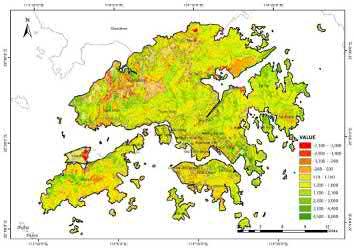
The relationship between
Instructor: CHEN Bin
WU Shengbiao
Teaching Assistants: LI Ziming YU Wenbo SZETO Chloe
in urban expansion and green space anaylsis by HUANG Yufei, LIANG Xiyue, LUO Yu
Our living planet is changing with a lot of pressing environmental challenges. These changes directly and indirectly impacted the functioning of nature and human health. There was a high need to comprehend environmental changes in the context of multi-scale spaces and times. Geospatial data, such as remote sensing, social sensing, and crowdsourced datasets, offered new and unique insights to advance our scientific understanding of environmental changes and the interaction between humans and the environment. The primary objective of this course was to empower our studies with fundamental knowledge. The course initially examined the theoretical framework of an integrated approach to smart and sustainable development. A brief introduction to the technical aspects of the modeling structure and simulation engines laid the foundation for understanding how tools could be applied in practice. The remainder of the course concentrated on methods for applying these tools to design studies and interpreting valuable information from simulation results.

Instructor: LEUNG Man Kit
Teaching Assistants: SZETO Chloe LI Yilun How the building
This hands-on course was designed to complement the team projects in Term 1 and to introduce students to analytical procedures and computational tools relevant to the research agenda of the Master Programme. The course consisted of day-long weekly sessions and covered various aspects of fieldwork techniques, including indoor and outdoor observations and environmental measurements. Students also learned computer modeling techniques for selected processes and spaces, followed by testing and validation against measurements and simulations. The effects of solar, thermal, airflow, and daylighting processes were assessed in comparison to targets and benchmarks. Throughout the course, students were introduced to various computational tools and their application in diagnostic tasks and generative processes. The knowledge and skills gained during the course were crucial for the successful completion of the team projects and for undertaking the master dissertation research in Term 2.
Master of Science in Sustainable Environmental Design
Environmental Simulation and Performance Assessment Tools
FINAL RENOVATION
SEED6103 / Part 2
Environmental Simulation and Performance Assessment Tools





specific urban neighborhood and devising innovative methods to enhance the acoustic environment. As we concluded the module, we introduced the concept of soundscape design/planning, highlighting its potential to augment acoustic quality in cities as a supplementary measure to conventional noise control methods.



Environmental Simulation and Performance Assessment Tools 4m vertical noise barrier








Simulation and Performance Assessment



The
SS 1 Pedestrian-oriented and Low Carbon Transport 2 + SS P1 M nimum Landscap ng Requirements (requ red)


6 Light Po
(1)

on (3B)
s ntered p ates etc L ght pollut on is reduced by comb n ng the g ass cu ta n wa l w th he s eel a um n um and a loy pane s n the cur a n wa through rat ona des gn Landscape a chi ects are adv sed to plan he andscape of the s te so tha the overa l tree cove is greater han 20% to mprove the therma comfo t o the s te and educe the u ban heat s and e ect And the des gn needs to be susta nab e understand ng the hab ts and charac e s cs of each ree species and p
um
um
p ates
p ates,

p




Instructor: AU Benny LEUNG Chi Fung
Teaching Assistant: SZETO Chloe
This course initially introduced the background and development of green and sustainable development. It then explored the environmental impact of building activities on the ecosystem using several established environmental concepts, such as Embodied Energy, Carbon Dioxide Emissions, Energy Life Cycle Assessment, and Environmental Impact Assessment. Tools and methods for assessing a building's environmental impact were critically evaluated and applied through case studies.
SEED6202

Resilience in the Design and Development of Healthcare Assets in the Post-COVID-19 Era by WANG Zeyu
Instructor: LEUNG Kam Shing
Teaching Assistants: SZETO Chloe YIN Shi
This course offered an introduction to city risk and resilience, focusing on cities with the capacity to plan for and mitigate the adverse impacts of disasters and climate change, ultimately saving lives and unlocking economic and social potential. The course aimed to catalyze a shift from a primarily solid, single-stream city-level resilience operations approach to a longer-term, comprehensive, multi-disciplinary package of technical and financial services. This approach aimed to build a pipeline for viable projects at the city level, which, in turn, fostered resilience.
SEED6303

Instructor: WONG Kam Sing
Teaching Assistant: SZETO Chloe
The course provided an advanced introduction to public policies for protecting the environment, and to conflicts over the use of those policies and who had the authority to make decisions about them. The course introduced students to some core concepts in environmental economics and familiarized them with the dilemmas and trade-offs that governments faced in making decisions with respect to the environment. It also aimed to make students aware of a range of factors that needed to be considered when making environmental policy. By the end of this module, students were expected to provide an introduction to the latest trend of environmental policies in Hong Kong as an example, including the blueprints on climate actions, air quality, waste management, biodiversity, etc.; to illustrate how the recent formulation of key environmental policies in Hong Kong had taken into account various conflicting factors, and who had been involved in the decision-making process.
SEED6305

Instructor: CHAN Edwin
Teaching Assistant: SZETO Chloe
The course's objectives were (i) to introduce theories and principles related to sustainable urban development and the environment; (ii) to review government policies and controls regarding the design, construction, and management of the built environment for urban sustainability; (iii) to explore innovative and smart solutions and management practices for sustainable environmental design; and (iv) to apply different approaches and practices in integrating various disciplines of knowledge to execute a sustainable environmental design project. The course materials were delivered through a combination of lectures, case studies, studio assignments, group project reports and presentations, and individual study papers. The subject matter was taught using a case study approach, promoting a student-centered learning approach that involved project reviews, site observations, and the reading of recommended documents and relevant information.

Sustainability of the Built Environment
This course intended to inspire thinking about the way we should construct our future living environments in order to find the most sustainable balance. Students explore the United Nation’s Sustainable Development Goals (SDGs) as they apply to Hong Kong, addressing issues of population and urbanisation, materials, resources, and human systems, as a way of understanding what a sustainable future might look like. Students evaluate different media and strategies that people have used to advocate for more sustainable approaches to the environment and community.
The course is taught in a blended learning format with students undertaking online activities in preparation for interactive F2F workshop sessions. The online components deliver the bulk of the course content, while the workshop sessions, which involve a wide range of group activities and exercises, help develop an understanding of the content and allow us to explore contexts and interconnections and apply the concepts to different scenarios. Throughout the course, students work within the award-winning Curios e-learning platform, an interactive virtual environment within which groups can develop and present their coursework, including SDG videos, infographic diagrams, advocacy comic strips, timelines, quizzes and feedback postcards.


The course explores the practices of urbanism across a range of contexts from antiquity to the present day. The organisation of the course content was such that each lecture focused on a different city, analysing the development of urban forms and structures of governance from a particular perspective, ranging from defence and control to disease prevention and climate mitigation. Through lectures and tutorials, students were able to develop insights into the social relations and human struggles that have been produced by, and continue to be produce, particular types of built forms in different places over time. In the broadest sense, the course used urbanism as a lens to understand the relationship between urban forms and the complex, multiple processes that constitute cities and their urban milieus.
As a final project, the students constructed a two-part narrative about a city at two different times in history. The purpose of the exercise was to allow them to gain deeper insights about urban change. By constructing an “urban story” through the lens of a narrator and engaging with a specific issue(s) that linked the past with the future, this assignment offered students both a means to creatively express their ideas as well as to develop a critical perspective of the complex forces that shape cities and urban practices. It also encouraged them to attend to the emerging social and environmental challenges confronting human communities in the coming decades.


Beyond the Concrete Jungle
This four-week Common Core Course attended by 98 students focused on our human relationship with nature as manifested in the fabric of the city around us.
Firstly, we examined the history of this relationship, the spectrum between artificial and natural, and natural laws such as interconnectivity which was introduced in the form of an interactive game. How do our cultural preconceptions, urban infrastructure, lifestyle and economics, compliment or flout those laws? Students produced a written opinion piece on an example of nature in my home, examining our attitudes to that chosen aspect, then extrapolating what this tells us about our relationship with nature generally.
Secondly, we embarked on a critical review of the manifestations of nature in the city, asking why any given relationship is the way it is. Student groups produced short videos observing a particular aspect of nature in the city, highlighting our sometimes contradictory relationship with nature.
Thirdly, students contextualized the insights gained from the previous sections into their own discipline, producing individual metaphorical posters featuring The Tree of Something in The City of Something where the tree represents a topic of the student’s choice, and the city represents the context for that topic. The posters were exhibited in a final gallery review at the end of the course.
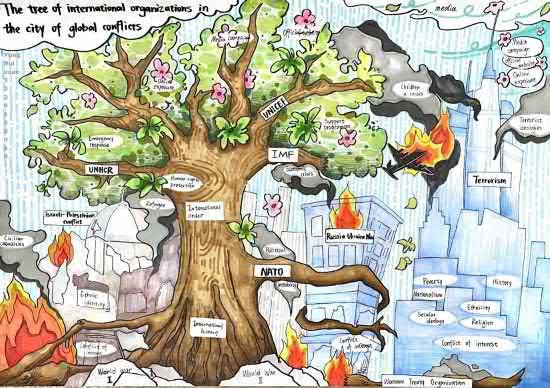

Communicating Ideas through Film
Films move at 24 images (or frames) per second, while the stories they convey move us emotionally. Either in the form of daily-shared stories on our phones or streaming platforms at home, motion pictures are deep-seated. This course investigated films as transformative tools for thought. Students learned about interesting ways of watching films, film criticism, and especially how to communicate powerful ideas through short films. By the end of the semester, students were able to translate their own ideas onto the screen by producing an individual short film that used the method of remediation to visually discuss Hong Kongrelated themes. Driven by an international range of film productions across time periods and genres, they began to develop a visual vocabulary through terms such as mapping, observation, narrative, and montage, in order to create their own short film adaptations. Using a 'procedural mode of engagement' — which was explained in class — as a way of examining these contexts and frames, the course adapted filmmaking as an act of creative engagement with the built environment. This creative reservoir of residential atmospheres helped students question their current place and time. Through in-class discussions, critical film analysis, peer reviews, and final short film screenings, the course aimed to present the various modes and styles of film production and further enhance students' visual communication skills. No prior film or poster-making skills were required




















Exhibition : HKU Postgraduate Diploma in Landscape Architecture
26 Aug - 17 Sept 2022
10:00 am - 8:00 pm
PMQ S314, 3/F, Block A, 35 Aberdeen Street, Central

Exhibition : HKU Postgraduate Diploma in Landscape Architecture
26 Aug - 17 Sept 2022
10:00 am - 8:00 pm
PMQ S314, 3/F, Block A, 35 Aberdeen Street, Central
Curators
Lily Zhang
Wataru Shinji
Exhibition Assistants
Law Pak Lun Parco
Yeung Hei Marco
Participants
Ban Han
Bao Shutong Bonnie
Cheng Tsz Ho Dave
Ho Chi Chung Terry
Lei Yanqing Ayla
Li Huanyang MuTsing
Li Sze Yin Anna
Lim Wing Kwan Tanya
Tin Yun Yue Tina
Sun Xiaofe Kathy
Yu Kaixin Kyle
Yu Yik Hei Josh













Currently housed under the Department of Architecture, the PhD Program in Landscape Architecture is intended for persons who wish to enter teaching and advanced research careers with a commitment to making an original contribution to the field. Students carry out research under the supervision of Faculty members in the Division of Landscape Architecture on a specific subject of enquiry. Research areas include but are not limited to: the built environment and urban landscape for public health and well-being; landscape and environmental planning; urban agriculture and green infrastructure; natural and cultural heritage conservation; and histories and theories of planning and urbanism.
The Program is connected to a number of research centres associated with the HKUrbanLab, the research arm of HKU’s Faculty of Architecture. The program hosts a biannual Research Postgraduate Student conference and a CIB Student Chapter, which organises international conferences at regular intervals. In addition, students also have opportunities to present their ongoing research work at monthly departmental Research Postgraduate Seminars as well as to participate in teaching activities.
CHEN Xinhui
MLA, University of Virginia
This study looks into the governance and production process of urban historic areas in Guangzhou, more specifically, the power relationships, interests, and aspirations of various actors redefining the value of these areas.
Supervisor :
CHU Cecilia Louise
The research aims to investigate the relationship between neighbourhood green space and health among the aged, underlying urbanisation and ageing issues. It will expand the theoretical frameworks of current deficient studies by shifting the research emphasis from individual scale to neighbourhood context, and bring in multi-level thinking, while designing and evaluating the sustainable neighbourhood green space that supports the healthy living until old age.
LI Jiali
MLA, Rhode Island School of Design
Supervisors :
JIANG Bin (Principal supervisor)
CHEN Bin (Co-supervisor)
LI Yilun
BSc (Agr.), MSc (Agr.), Beijing Forestry University
By taking typical Public Housing Estates in Hong Kong as cases, this PhD project evaluates the diversity of outdoor thermal comfort under extreme heat condition, and its association with built environment characteristics at a micro-scale, so as to provide references to future urban renewal and reconstruction.
Supervisors :
REN Chao (Principal supervisor)
ZHENG Tan (Co-supervisor)
Urban Land Cover Mapping from High-Resolution Remote Sensing Imagery Using Deep Learning with Noisy Labels
LI Ziming
MSc, Sun Yat-sen University
Large-scale high-resolution urban land cover maps provide insights into the interactions between human activities and urban environmental change. This study aims to develop a cost-effective urban land cover mapping framework using open land cover products as label data. The noisy labels, intra-class heterogeneity, and inter-class homogeneity are three issues to address using deep learning algorithms.
Supervisors :
CHEN Bin (Primary Supervisor)
JIANG Bin (Co-supervisor)
LI Weifeng (Co-supervisor)
Virtual Nature as Medicine: Exploring Impacts of Highly Simulated Nature on Patients’ Mental Health at an Orthopaedic Rehabilitation Hub in Hong Kong
The nature therapy based on virtual reality technology has not been fully understood and not been well applied in healthcare institutions as yet. This research will introduce VR therapy in the orthopaedic rehabilitation centre to provide orthopaedic patients with a variety of virtual natural therapy experiences.
MLA
Landscape as a Preventative Strategy: Understanding the Correlation Between Landscape Characteristics and Sexual Crimes
Supervisors :
JIANG Bin (Principal supervisor)
SCHULDENFREI Eric (Co-supervisor)
LU Wilson (Co-supervisor)
Landscape characteristics may impact the key elements associated with sexual crimes: offenders, victims, and locations. The aim of this study is to explore how these landscapes influence behaviors, perceptions, and the probability of sexual crimes by quantitatively analyzing top-to-down and eye-level landscape characteristics at sexual crime locations. This study will identify and propose strategic interventions for reducing the risk of sexual crimes.
LU Huan
B.S. ; M.S. Zhejiang Univerisity
Supervisors :
JIANG Bin (Principal supervisor)
CHEN Bin (Co-supervisor)
JIA Beisi (Co-supervisor)
LUO Lan
MLA, Sichuan Agricultural University
Three key objectives of this study are 1) to identify the acute and chronic impacts of nature intervention on the rehabilitation process; 2) to propose the promising mechanism and pathways of the natural environment for treating addiction; and 3) to provide practical suggestions for creating supportive environments for addicts.
Supervisors :
JIANG Bin (Principal supervisor)
JIA Beisi (Co-supervisor)
The study aims to identify whether and to what extent various types of sublime nature, in contrast to ordinary nature, impact individuals’ mental health and spiritual health. It seeks to investigate the association between mental health and spiritual health induced by sublime nature.
QIAO Lin
MLA, Zhejiang Univerisity
Supervisors : JIANG Bin (Principal supervisor)
LU Wilson (Co-supervisor)
Historic cities are embedded with a deep knowledge of their ability to adapt, having survived centuries of social and political upheavals and natural disasters. Beyond a mere preoccupation with preserving forms and aesthetic styles, the study will investigate the formation of place, the use of place, and the adaptability of place to celebrate a more nuanced and adaptive perspective on heritage conservation, emphasising community resilience and human well-being.
SATTAYANURAK Kanisa
MLA, HKU
Supervisors :
LU Xiaoxuan (Principal supervisor)
CHU Cecilia Louise (Co-supervisor)
WANG Ting
BA Urban Planning and design (First Class Honors), University of Liverpool; MLA, HKU
This study looks at the development process of contemporary wetland parks and the production of social meanings and values.
Supervisors :
CHU Cecilia Louise
SENG Eunice
LU Xiaoxuan
This study will explore the relationship between road environments and drivers’ health and safety through two main questions: (1) Whether and what environmental characteristics significantly affect mental status, physiological status, and driving performance. (2) What environmental characteristics of the roadside landscape can achieve satisfactory and optimal balance among these benefits?
MA, China University of Mining and Technology
Supervisors :
JIANG Bin (Principal supervisor)
WEBSTER Christopher John (Co-supervisor)
This research aims to provide a solution of generating high-resolution, spatially-continuous canopy height maps in Hong Kong, a high-rise high-dense urban context. It employs High Resolution Network (HRNet) deep learning architecture to train a canopy height estimation model, utilizing high-resolution satellite images and ground truth LiDAR measurements.
MLA, University of Georgia
Biased land use planning and unequal allocation of public resources have caused environmental injustice in high-density cities. This study aims to examine the associations among human-centric perspective environmental exposures, income, and real estate factors at TPU level in an Asian high-density city, Hong Kong, using semantic segmentation and deep learning algorithms.
Supervisors :
JIANG Bin
XU Frank
This PhD dissertation aims to use arts development as a lens to unpack the economic and social transformation process in Hong Kong. It will explore how this creative city concept has been adapted under Hong Kong’s unique historical context; how the material aspects of arts space tie together with the mental and social aspects of spatial production through time; and how the adaptive re-use of old industrial buildings is related to the discourse of conservation.
Supervisors :
CHEN Bin
JIANG Bin
LIN Chen
BSc SYSU, MSc NUS ZENG Wenxin
MSc(Urban Design), HKU
Supervisors :
CHU Cecilia Louise
ZHOU Ying

Associate Professor (Teaching)
Program Director
MSc(Cons)
Associate Professor
Associate Professor
Program Director
MSc(SED)
VALIN Ivan BSc(ARCH) Virginia; MLA + MArch UC Berkeley
PRYOR Mathew BA(Hons) Heriot-Watt; CMLI; RLA; FHKILA; CA
CHU Cecilia
Associate Professor JIANG Bin REN Chao
Assistant Professors
Senior Lecturer
/
B.A (A.S.), B Arch (Dist), HKU; S.M.Arch.S., MIT; RIBA; FHKIA; HKIUD; Assoc AIA; RA (HK, PRC)
BEngUP Hunan; MSLA Peking; PhD Illinois; CELA
BArch; PhD; BEAM Pro
CHEN Bin BSc WHU; PhD BNU
KELLY Ashley Scott BScArch Michigan; MArch Harvard
LU Xiaoxuan COATES Gavin
ECHEVERRI Natalia MAK Vincci
BArch SCI-Arc; MLA Harvard; PhD Peking
BLA DipLA Leeds; DipPCDI; CMLI(UK); MCSD(UK); FHKILA; RLA; CA; FHEA
BA Washington; MCP, MArch UC Berkeley
BArch USC; MLA Harvard; SFHEA
Part-time Staff Title Name Qualifications / Affiliations
Adjunct Professors
CHAN Edwin H.W.
LAM Kin Che
PITTS Adrian KATZSCHNER Lutz
Adjunct Associate Professors
AU Benny P.N.
GIAM Ei-kie
JUNG David
KEHRER Jutta
LEUNG Chi Fung
LEUNG Kam Shing
Leung Man Kit
BArch, MArch Sheffield; LLB(Hons), PhD UoL
Meteorology Bonn; Promotion Kassel; Habilitation Kassel
BA, MPhil HKU; PhD UNE
BSc Tech Sheffield; PhD Sheffield
BSc (Hons) Imperial; MSc(Eng)(BSE), MSc (EnvMan) HKU
BEnvDes BArch (Hons) LEED AP
BALA UC Berkeley; MLA Harvard
MArch, ARB, HKIBIM
BEng (Hons) HKU; MSc Poly
BA(AS) HKU; MCP, MEng UC Berkeley; PhD Cambridge; EMBA CUHK
BArch (HKU); MPhil Cambridge
Senior Lecturer
Lecturers
TRUMPF Susanne
CEVALLOS BARRAGAN, Francisco
ETTEL Nikolas
SHETABI, Linda
Assistant Lecturer
Teaching Assistants
FAN Phoebe Man Si
LAW Pak Lun
Nwe Saw Yu
WONG Caraccioli Brandon
WONG Hoi Lam
YEUNG Hei
BArch TU Berlin; MArch TU Delft; FHEA
Adjunct Assistant Professors
BEDIR Merve
BArch METU; PhD TU Delft;
BRENNAN Bernard BArch DIT; PgDip ARB UCL
BArch AkBild; ir.Arch MA(AH) Bartlett, UCL; FHEA Dr.techn. Candidate AkBild d
BA UCLA; MSc(Con) HKU; PhD UofGlasgow
MLA HKU
MScArch Spain; MLA HK BA(AS); MArch HKU BA(LS) HKU
MLA HKU
BA(LS) HKU
MLA HKU
SZETO Chloe BA(LS) HK
CHEN chen
BArch, MArch Tsinghua; MA AA London; MLA Harvard
CHUA Mark Hansley BSc, MSc, PhD HKU
CHUI Jack S.K. BEng SYSU; MSc CUHK
DELPHON Andres Delphon
HAU Billy C.H.
HILGEFORT Jason
JAN Brian
MArch, MEd(PGCE) Spain; RIBA
BSc, MSc, PhD HKU
BUP UC; MArch UBC; PHD candidate RMIT; AICP
KOKORA Michael BA Minnesota; MArch Yale
NG Sylvia
BSc(Arch) UVA; MArch, MAUD Harvard BSLA Penn State; MLA UC Berkeley; AA Dipl
Part-time Staff Title Name
Adjunct Assistant Professors Assistant Lecturer Honorary Professor Lecturers
Qualifications / Affiliations
PHILLIPS Steve BA(Hons), IntArch, MA DipArch RIBA, HKICON
ROBINSON James Ian MI Hort; HND
SALADINO Nicola
SHINJI Wataru WILSON Barry
BArch Spain; MA AA London
BA(Arch) UC Berkeley
BA(Hons) Edinburgh; FHKIUD; FHKILA; HKRLA; CMLI.
WU Roger T.S. BArch Bath
ZHANG Lily
WONG Kelvin S.K.
CHAN Howe
CHAN Jeremy Y.L.
TAN Ian
Wang, Ting
Xiao, Pat H.
NG Debra-Jean
BA(Arch), BA(Hons) UC Berkeley; MArch Princeton
BA(AS)(HKU); BArch(HKU); MASA(UBC); HKIA; RA(HK); AP(HK)
MLA HKU
BASc(Hons), BES(Hons) Waterloo; MLA UBC; PhD HKU; ASLA; HKILA; RLA (HK)
BArch NUS; PDD Building Cons (Dist), MSc (Dist), MA UK; IHBC, ICOMOS (ICTC & ISCARSAH), ICOM (CAMOC)
BA(Hons) XJTLU; MLA, PhD HKU
BEng HUST; MLA HK
BBA South Australia; MSc HKU

The University of Hong Kong
Division of Landscape Architecture Annual 2022-2023
© 2023 Division of Landscape Architecture, The University of Hong Kong
Published by the Division of Landscape Architecture, Faculty of Architecture, The University of Hong Kong
All Rights Reserved.
No part of this publication may be reproduced, or stored in any medium by electronic means, without the prior express permission of the Division of Landscape Architecture, The University of Hong Kong.
Editorial
ETTEL Nikolas
Design
LI Ziyuan Lena
CHAN Shu Fai Eddie
LAM Anthony
The Division of Landscape Architecture
Faculty of Architecture
6/F, Knowles Building
The University of Hong Kong
Pokfulam Road
Hong Kong
Tel : (852) 3917 7699
Fax (852) 2548 3059
Email : landscape@hku.hk
Website : www.arch.hku.hk/programs/dla
Facebook : HKU Division of Landscape Architecture
Instagram @hkulandscape
WeChat : @港大園境建築
小紅書 港大園境建築
ISBN 978-988-70296-0-1